ADVERTISEMENT

This is not a bike race. It cannot possibly be a bike race because we have all agreed that it would not be a bike race. And yet, here I am.
Five bright red lights on my head unit flash the warning of an untenable pace; an unsustainable heart rate, and the familiar desperation of watching the invisible elastic holding my wheel to the wheel in front of me, begin to stretch and fray. The road bends gently to the left, aiming further skyward. We complete the turn, and suddenly the full scale of Austria's 'Hohe Tauern' range unfurls itself from the clouds like a chiseled bicep of stone and glacial ice. The wonder is short-lived, replaced by the dread of losing the wheel and the grim realization that the suffering has only really just begun.
Translated as "big ride" in Italian, a 'gran fondo' is loose cycling parlance for exactly that: a big day in the saddle, usually with hundreds or thousands of fellow participants – most of whom have entered into an unspoken social, gentlemanly contract that this is in fact, a leisure ride, and *not* a race. But then there's the tip of the spear. The one-percenters who abide by the counter-argument – a different unspoken agreement that this is absolutely, unquestionably a race. These are the types who use the neutral rollout to jockey for position, form alliances to create early breakaways, attack through well-stocked aid stations, and generally try to make the day as hard as possible for anyone who dares ride near the front.
The recently opened F.A.T. International Mankei Alpine Hut.
Billed as the highest paved road in the country, Grossglockner (loosely translated "Great Clock") connects Fuscher Törl at 2,428 meters and Hochtor Pass at 2,504 meters with some 50 kilometers of Europe's finest postcard-worthy alpine tarmac (one that you've seen before on Hodinkee).
For a cyclist, the official Strava segment (North to South, via the outskirts of Zell am See) is nearly 5,500 feet of uninterrupted verticality, ranging between 6 and 15% before a series of cobbled switchbacks on the Edelweiss-Spitze ensure complete and total ego death with slippery, eye-watering gradients in the final push to Edelweisshütte at the summit. There are very few roads like it anywhere in Europe – or the rest of the world, for that matter – so it's no wonder that this famed stretch was one of the earliest testing grounds for Porsche's high-performance machines.
This ride is sort of like that: a gran fondo. And to reiterate: we are not racing. Specifically, it is the Giro di Mankei, a relatively new 80-kilometer point-to-point ride from the shoreline of Zell am See to the Porsche F.A.T. Mankei Mountain Hut at the very top of Austria via the fearsome Grossglockner high mountain road. I'm on this road to find the meaning behind an angry little marmot motif on the dial of a Porsche Designs chronograph, and like you, might also be wondering why I didn't just ride shotgun in the GT3 instead.
Speaking of Porsche, the Giro di Mankei was dreamed up by Ferdi Porsche (don't miss his excellent Talking Watches episode from 2022 here) in collaboration with the fun-loving Vienna-based cycling collective BBUC, creating a hybrid cycling event of sorts that celebrates both car and bike, and complements other F.A.T International lifestyle events like the properly iconic winter Ice Race (we once called it "Winter's Wildest Motoring Event," see why here).
The format of the Giro is relatively simple: ride up a mountain, party, then ride back down. Though still in its infancy, it's a spectacle that mixes the semi-competitive team spirit of the Rapha Prestige with the ride/relax vibe you might find at a Grinduro event, but with the sort of mountaintop "après" finish you'll only experience in Europe. And since buying and restoring the historic Mankei Alpine Hut some three years previous, Ferdi Porsche now has the perfect venue that could serve as an activity hub for cyclists and motoring enthusiasts alike – far more than just a cafe and rest stop for the many drivers who make the high-mountain trek a highlight of their summer.
There's a shout near the front of the group and a frenzied clatter of chains grasping for larger gears; this must be where the main timed segment begins, as we roll under a distinctive rock outcropping nicknamed 'the horn.' Chirping in unison, our head units announce the invisible start line of the day's actual competition, or KOM (King of the Mountain, in cycling parlance). I am already well beyond my threshold. There is nothing more to give, and we're still at least six kilometers from the hut.
I pull the ripcord. The elastic snaps, and I am dropped.
As I drift backwards, the group is suddenly a half-dozen bike lengths ahead. I let them go. My narrowed vision begins to widen, and I collect myself, taking stock of my surroundings. A furtive heartbeat at 188bpm thumps against my ears from within, dulling all senses but the sound of my own labored breathing. But 188 slows to 183, then 179. My hearing returns to normal at 172. A high-mountain stream babbles under the road, snapping the other senses to attention. There's a pungent, earthy warmth trailing through the rapidly thinning air. I hear the hum of rubber on smooth tarmac, the rhythmic buzz of a 34-tooth chainring spinning at 90rpm.
My pace becomes smooth and unhurried, already well behind my breakaway companions and a universe adrift from the Strava KOM set by Ben O'Connor in stage four of the 2024 tour of Austria. Across the valley, the tinkle of cowbells dots the lush, eastward-facing walls, now warming in the morning sun.
A group rides past the Horn – the start of the day's KOM challenge. (Photo by Ruben Best).
Some ninety years earlier, on September 22nd, 1934, the entirety of the Grossglockner High Alpine Road was traversed by car for the very first time. Behind the wheel was Salzberg state governor Franz Rehrl and the alpine road's engineer Franz Wallack, who completed the climb in their heavily modified Austrian-built Steyr 100 in five hours. O'Connor's 2024 ride, aboard a carbon fiber Van Rysel RCR Pro, would complete the Grossglockner segment in a little over an hour, though to be fair, the Tour of Austria took the route from North to South, while the pioneering drive climbed up the southern side of the pass, but that's neither here nor there. The real key here is that for nearly a century, the Grossglockner has remained a playground for motorists and a bucket list challenge for cyclists.
As the summit looms, it's not hard to see why.
Ferdi Porsche spurring on Team BBUC in a GT3 as they approach the summit. (Photo by Ruben Best)
Choose your Grossglockner weapon: either a Porsche GT3 or a Specialized Roubaix S-Works with SRAM Red AXS and Zipp 303 wheels.
An unmistakable growl approaches from behind – it's a pair of flat-six engines downshifting in chorus; Ferdi Porsche in an Oak Green GT3, trailed by the dusty pink F.A.T. International 992, the event's four-wheeled totem of sorts, adorned with a patchwork of SRAM, Zipp, Specialized, and BBUC decals, along with that signature screaming marmot in bright blue. In reality, the docile, herbivorous marmot (or "mankei") that populates this high-mountain realm is far from such a fierce depiction. Still, it's some fun, creative license by Ferdi and his team, and it makes for a perfect little secret Porsche handshake of sorts.
If you look closely, you'll find it in sticker form on road signs throughout the Grossglockner ascent, on food menus at the hut, and even on the dial of one Porsche Design Chronograph 1 "Utility" – a 2023 limited edition built from titanium carbide to commemorate the opening of the Mankei Hut. Absent the screaming rodent, the Utility Chronograph is a deeply cool tribute to the vintage Porsche Design "Military" Chronograph issued to various international combat units back in the early 1970s. But gone is the Lemania 5100 that powered those utilitarian models, replaced by Porsche Design's own proprietary WERK 01.240, a COSC-certified flyback chronograph calibre. This model is part of a 250-piece LE that retails for $13,000.
I get out of the saddle to switch muscle groups, now using the weight of my upper body to drive the pedals. It's as close to rest as you'll find on gradients like this, the up and down, side-to-side sway granting only momentary reprieve. Sweat spatters the marbled paint of my borrowed Specialized Roubaix, forming a swirling impressionist painting in the bright high-mountain sun. I keep these efforts short and the power measured.
Without knowing exactly what still lies ahead, I can't risk burning any more matches, cramping, or worse: completely blowing up. Sit. Dance. Sit. I dance over the words FELIX FELIX FELIX crudely scrawled across the road in white spray paint. Another "object d'art," probably leftover from that same Tour of Austria queen stage, and probably meant for Felix Gall, a native of nearby Tyrol.
Ferdi Porsche wears a vintage Porsche Design "Military" Chronograph.
In cycling, climbs are rated on a numeric scale from four (easy) to one (very hard), depending on their length and average gradient. But then there's the HC (Hors Categorie) rating, which translates to "beyond categorization" in French, widely regarded as the most difficult type of climb on any mountain. Long and unrelentingly steep, and often with significant elevation gain spread across 15 kilometers or more, these fearsome climbs are not meant to be trifled with, and certainly not recommended for jetlag-addled legs such as my own.
The mighty Galibier in France, and the sinuous Stelvio in Italy are both equally iconic, properly feared HC climbs in cycling – and the Grossglockner, with its many switchbacks spread across the mountainside like capillaries, ranks among them as an Hors Categorie worthy of respect.
For the first time in nearly two hours, the climb's stranglehold relents and the road flattens. Noting the wind direction rippling through the red and white triband of the Austrian flag at the nearby Fuscher Törl, I release my hands from the bars and coast, stretching neck and shoulders, savoring the breezy respite before reaching down to zip my jersey in the chill of the thinning air.
The relief is short-lived, as the road makes a sweeping left-hand turn into a long, precipitous drop that reveals, for the first time, the expanse of the eastern side of the pass, and the Mankei Alpine hut perched on its edge next to a sparkling alpine lake. Espresso and warm plates of strudel await behind its wooden walls, upon which you'll find that screaming marmot.
I squeeze both shifter paddles simultaneously, and the SRAM Red front mech buzzes its acknowledgement, eager to finally lift the chain back onto the big ring.
Vienna-based BBUC Sports with team co-founder Marvin Mangalino (L) and Ferdi Porsche (R) at the Mankei Hut. (Photo by Ruben Best)
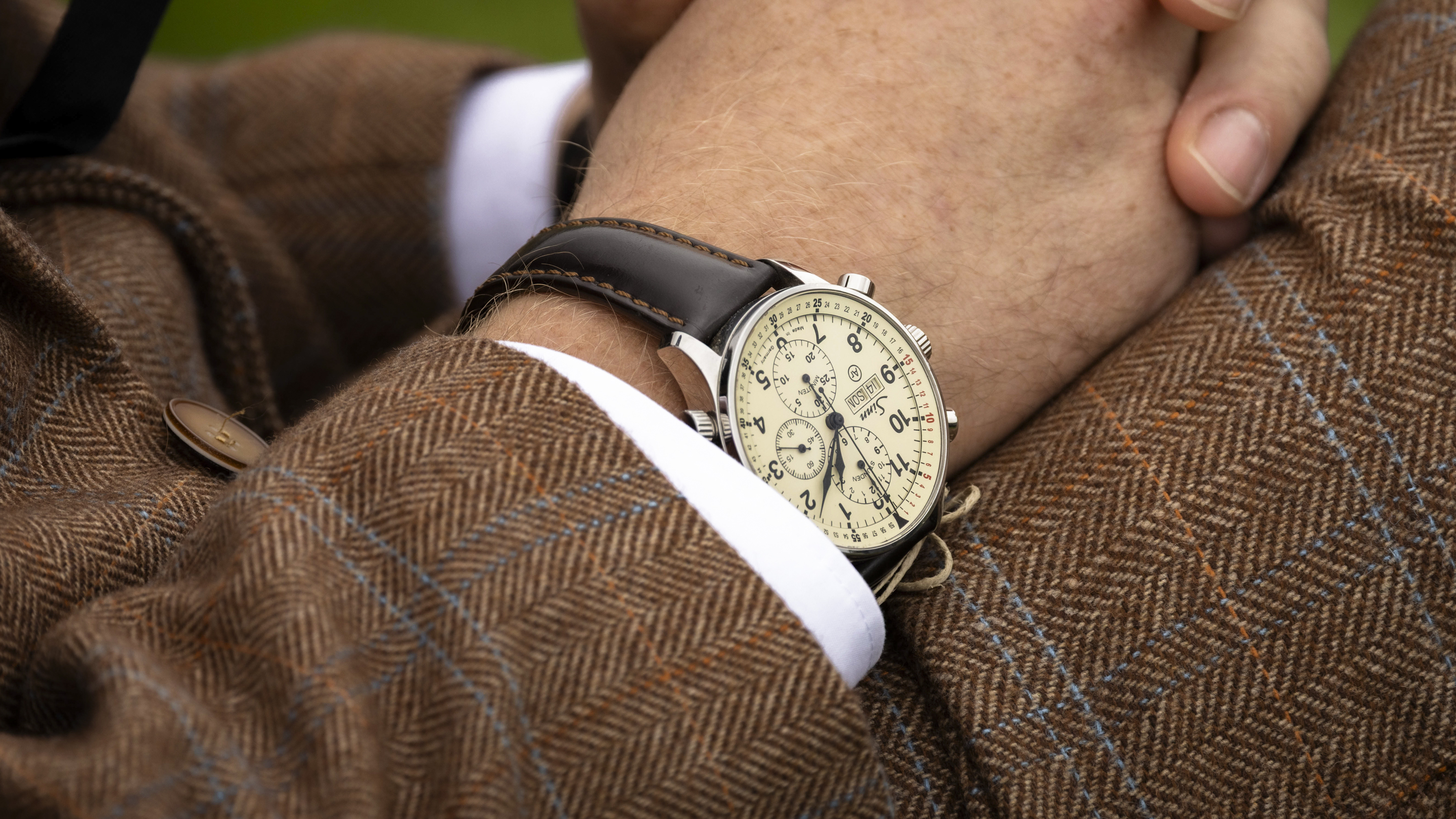
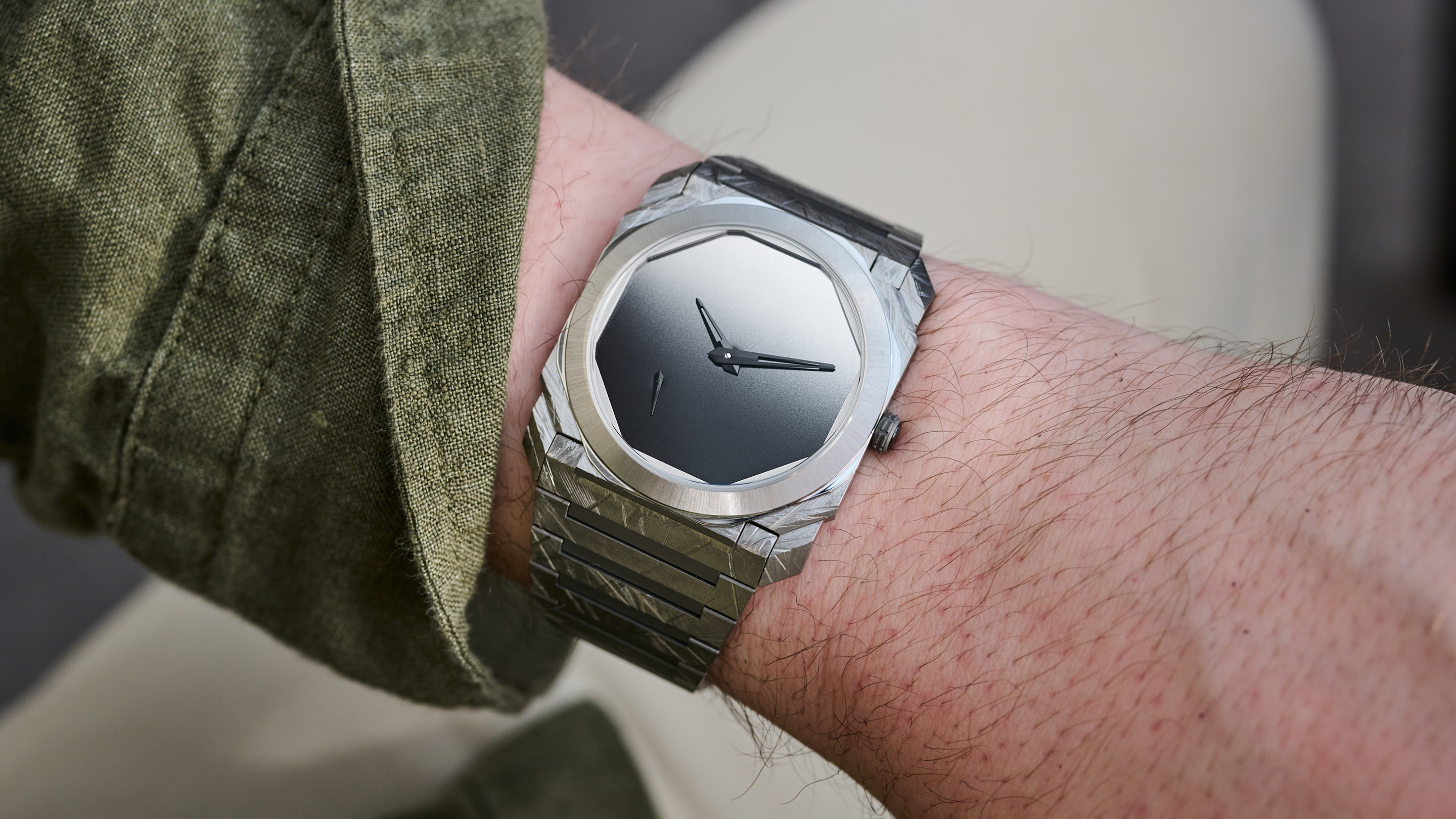
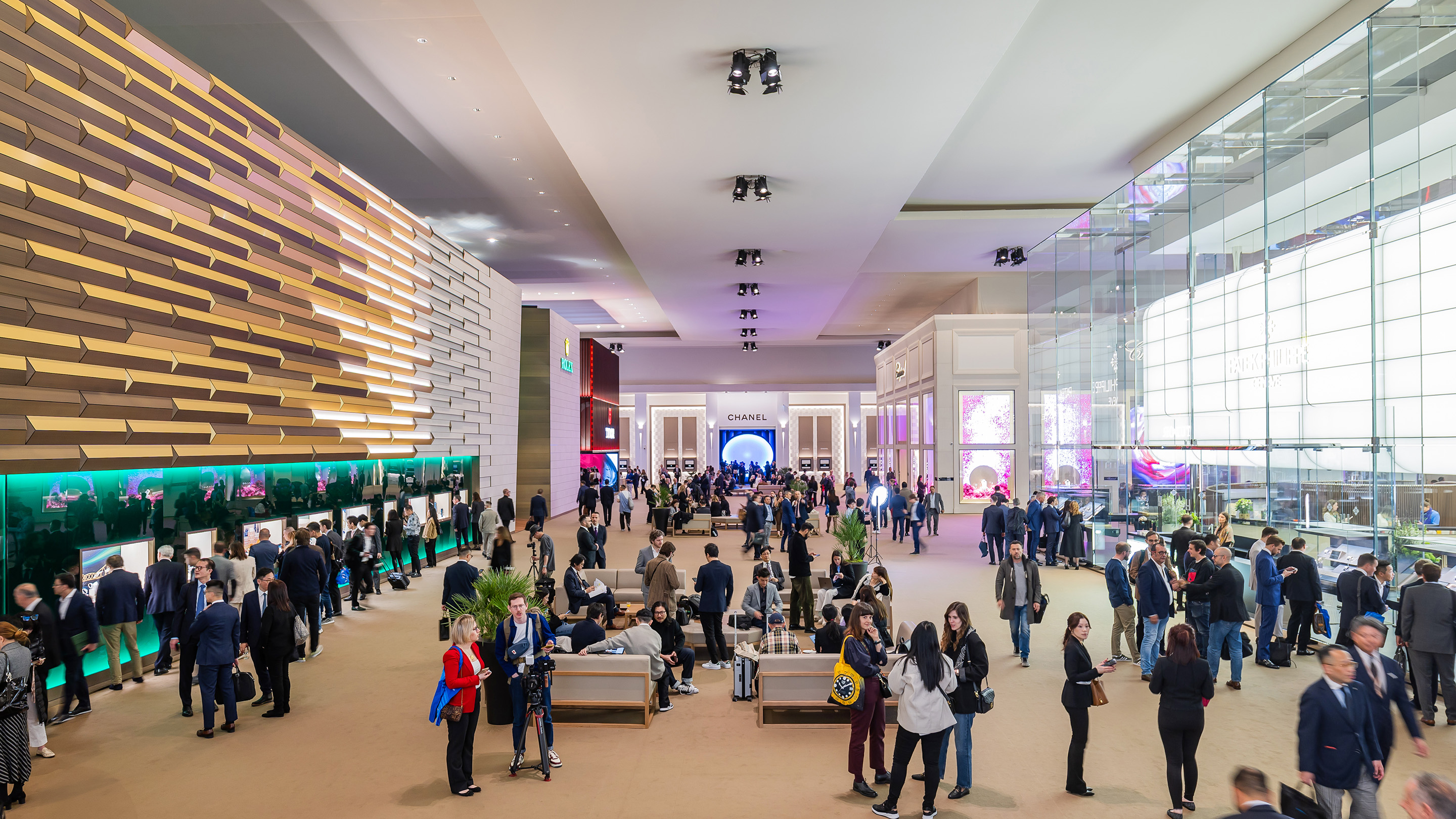
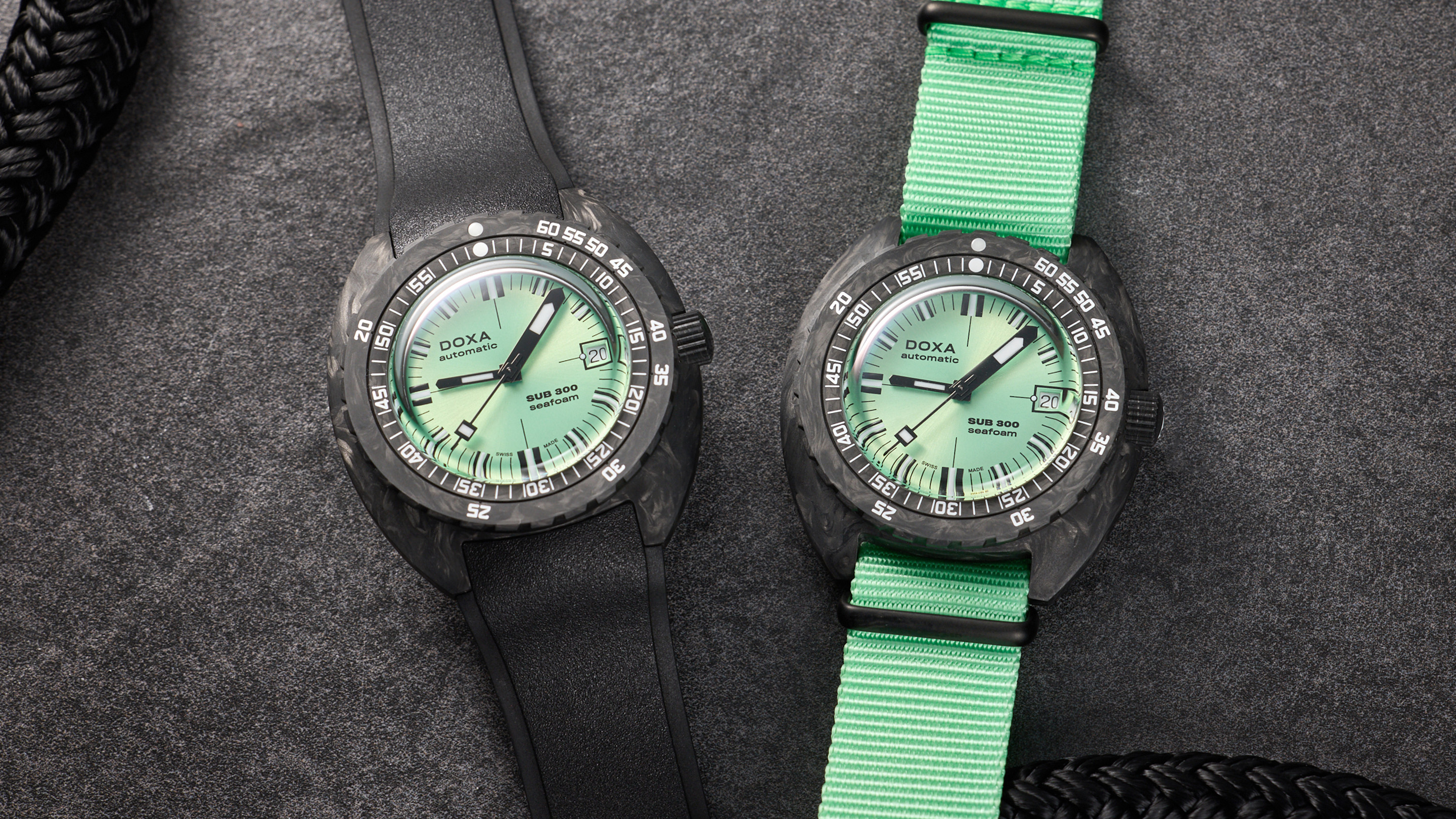


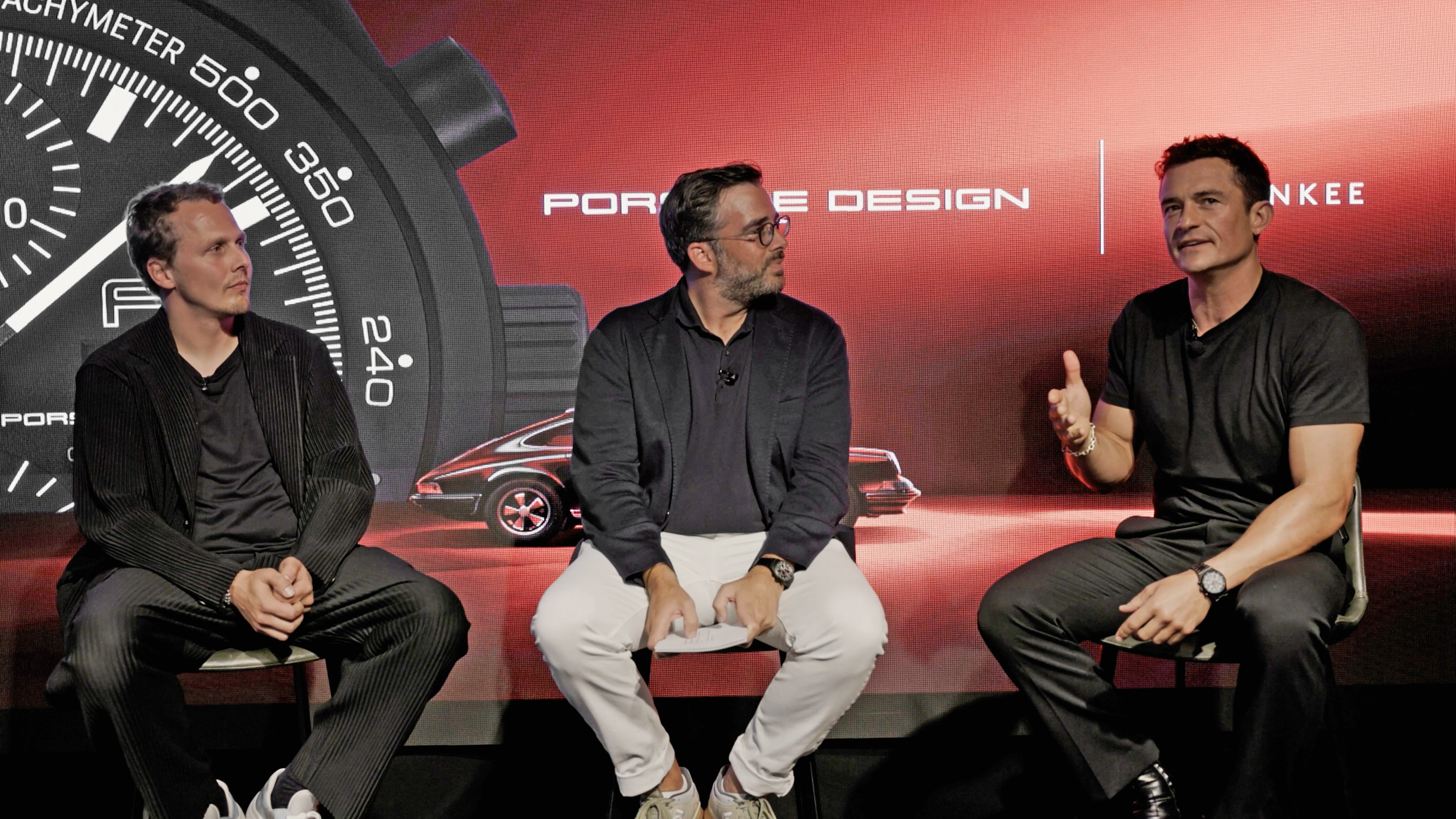
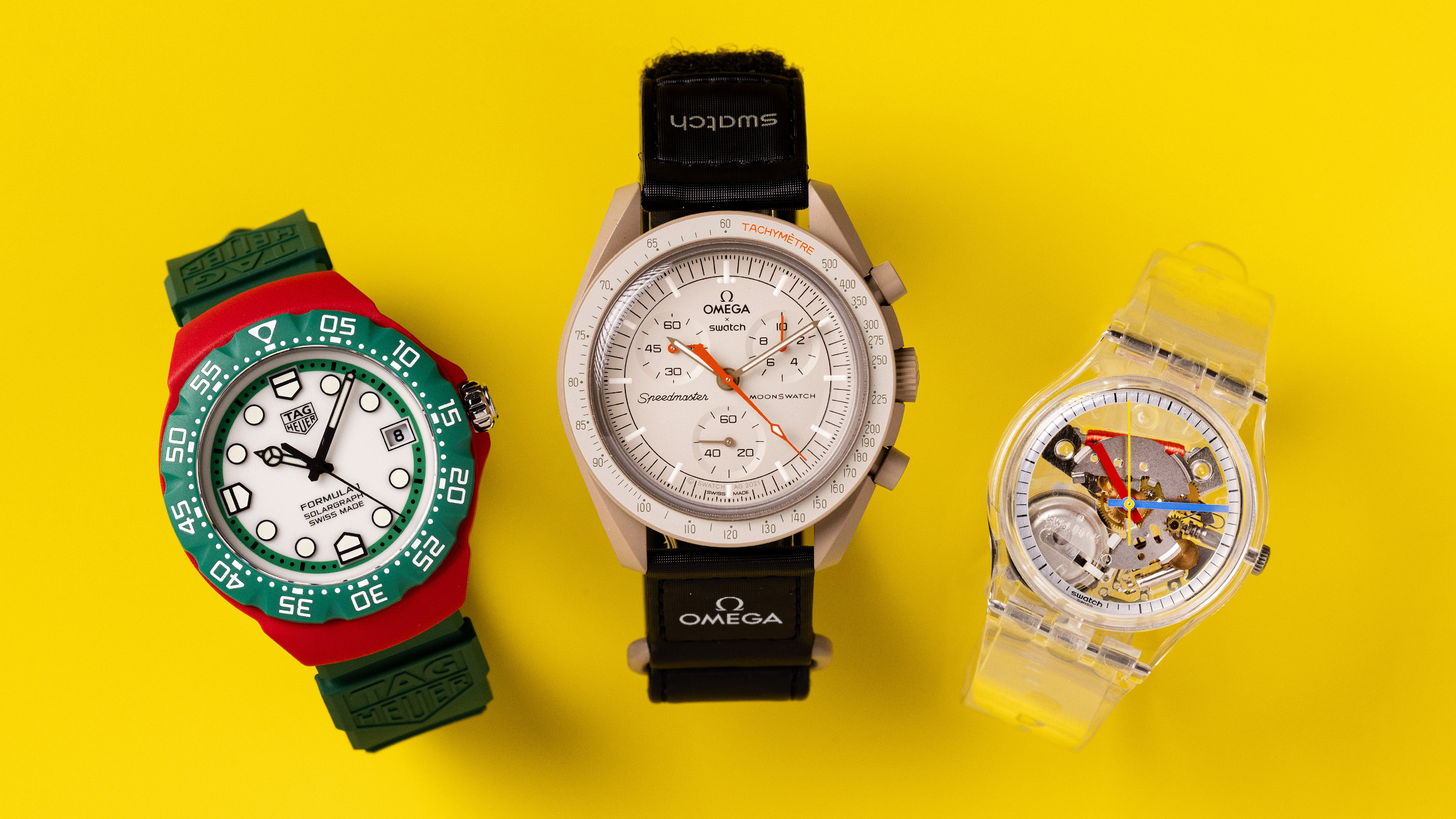
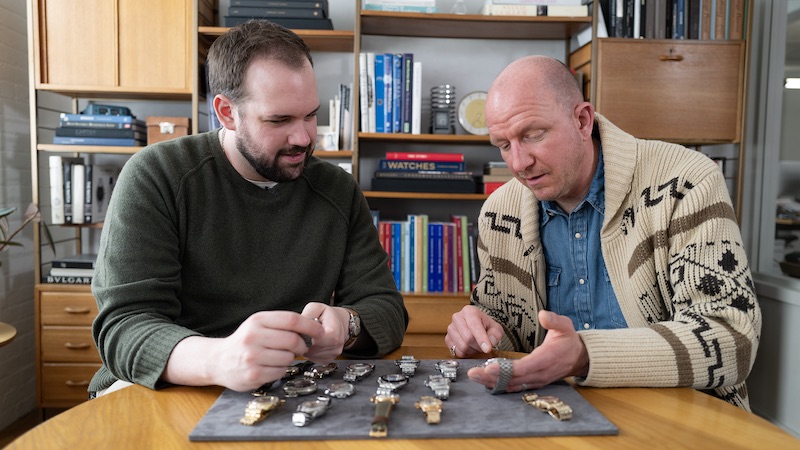

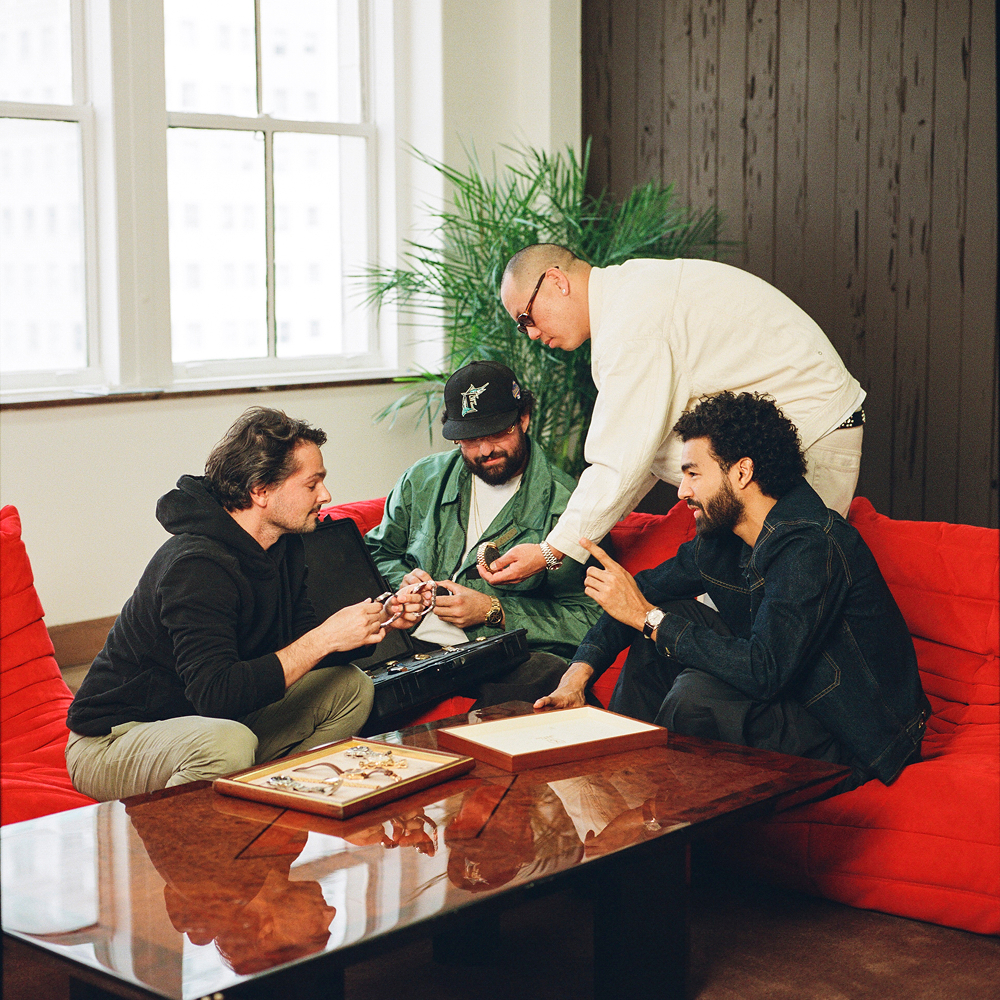
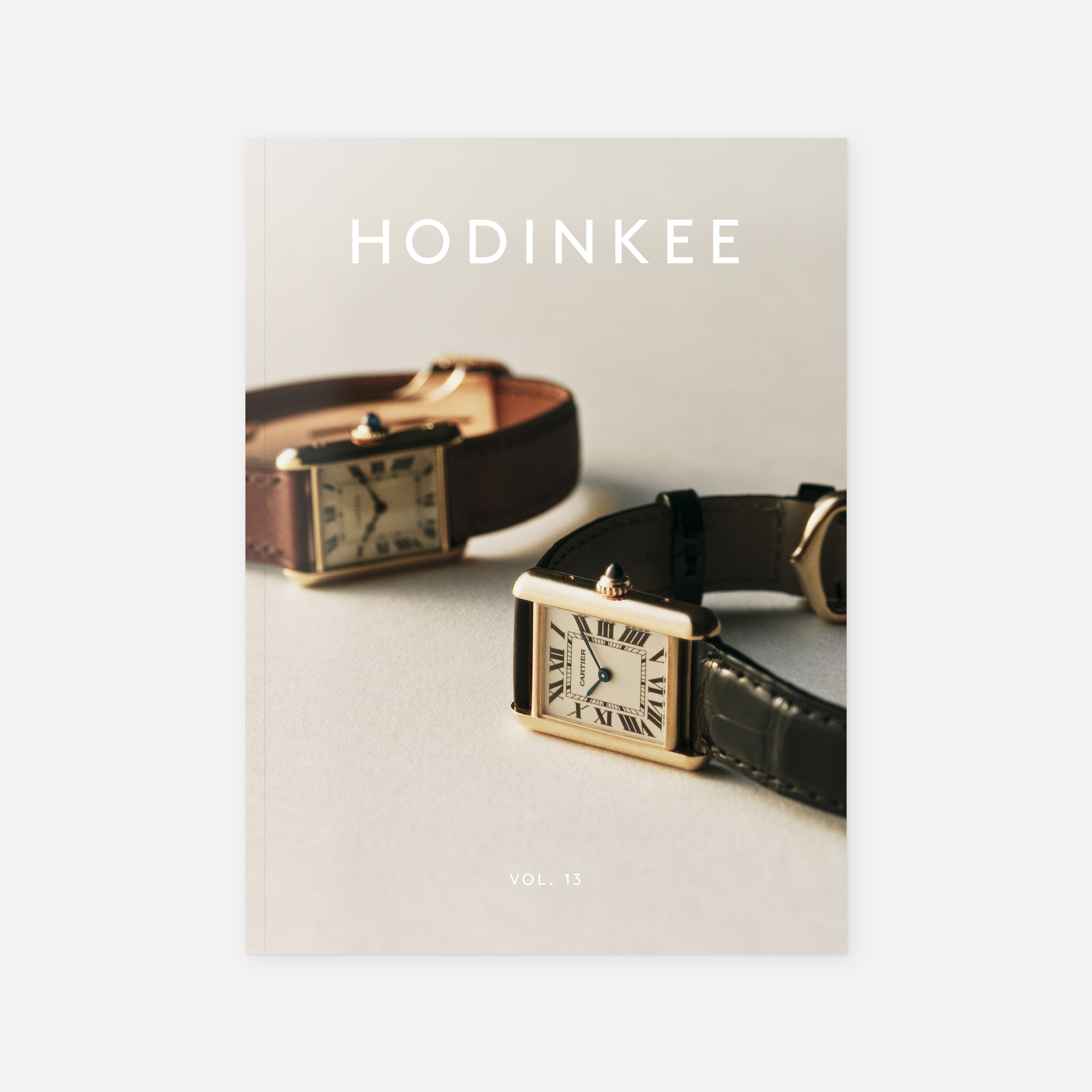

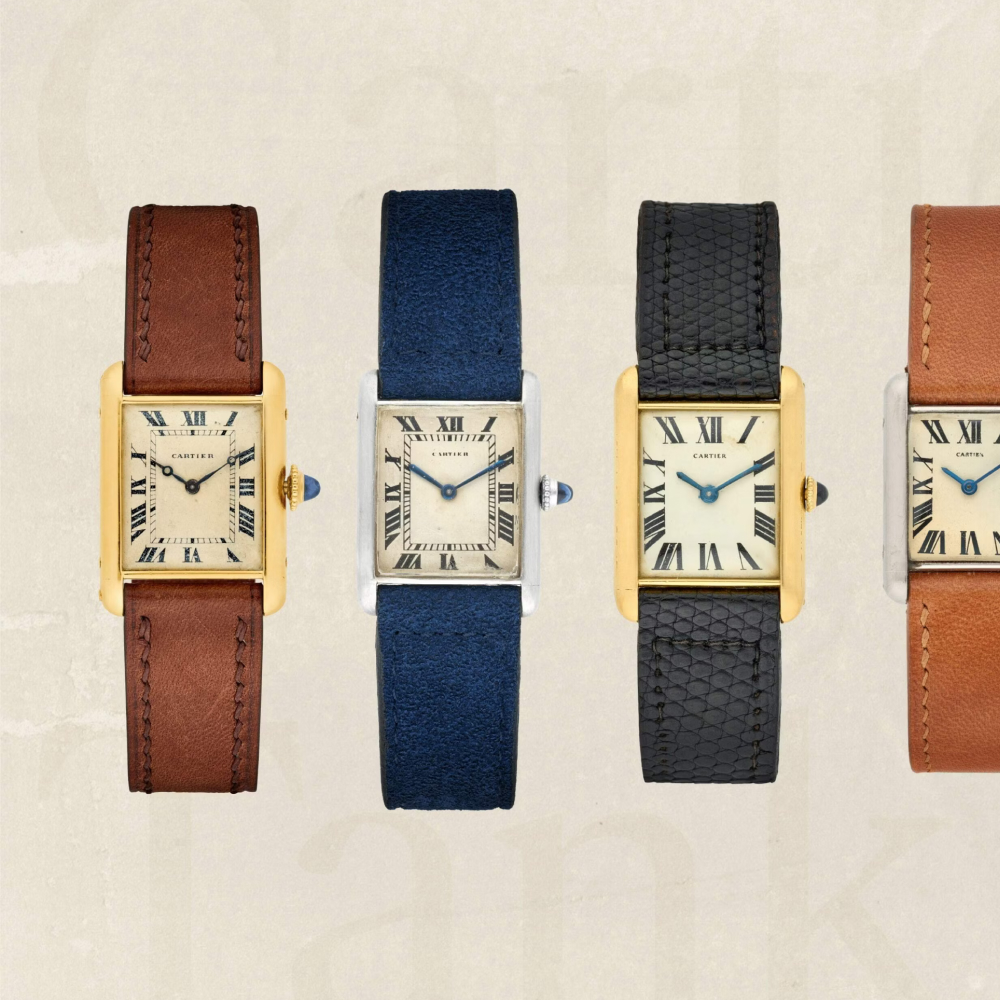







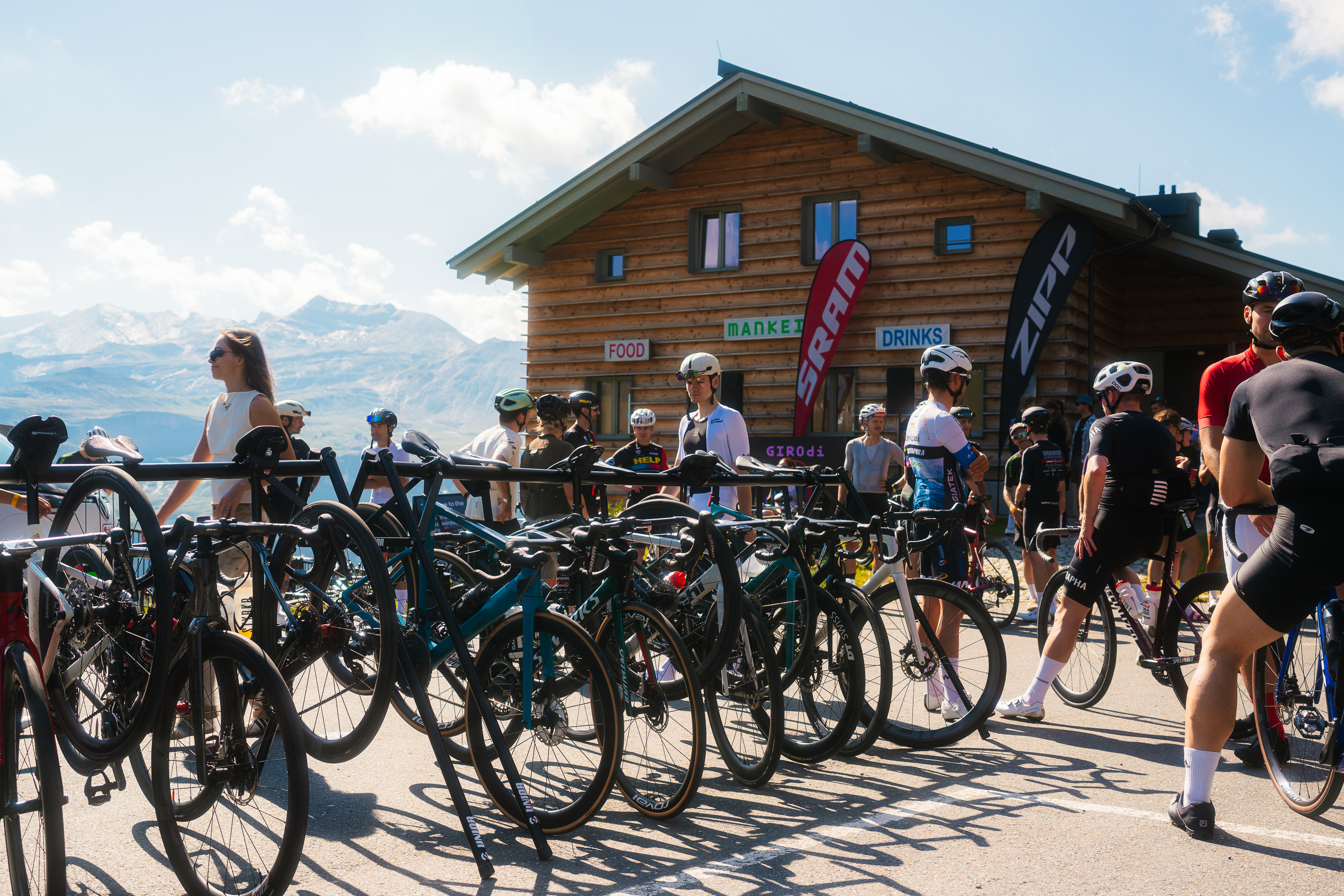
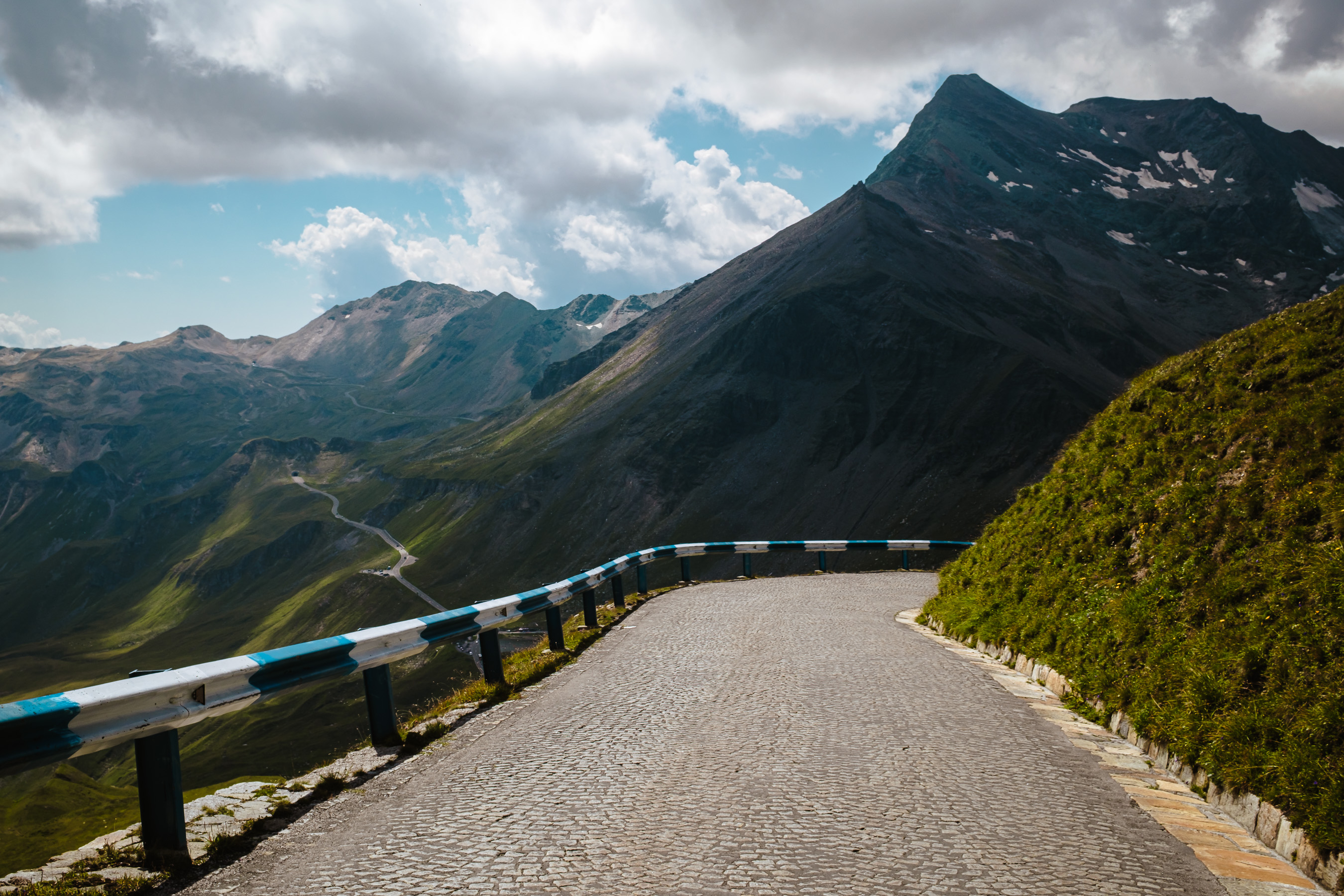

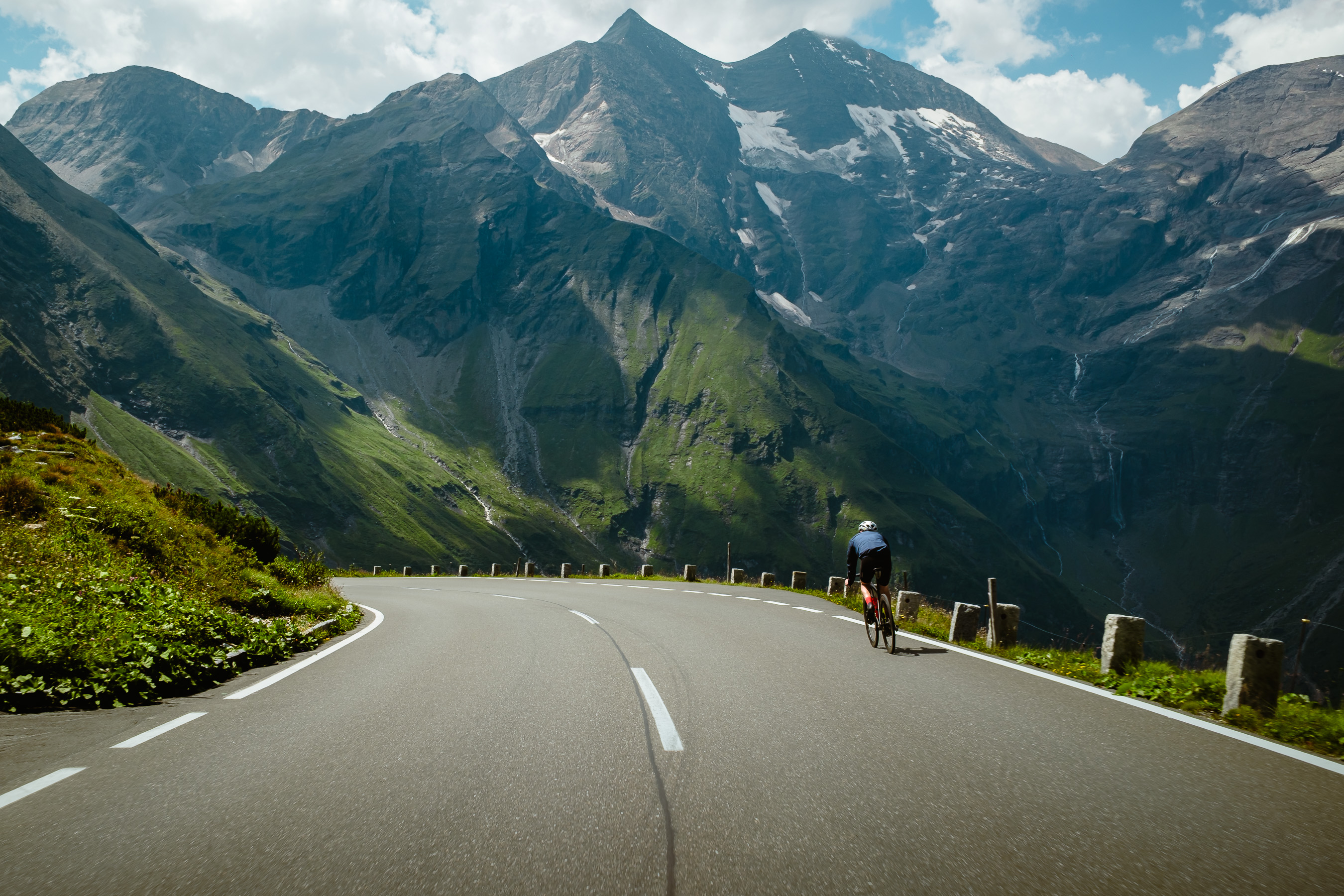
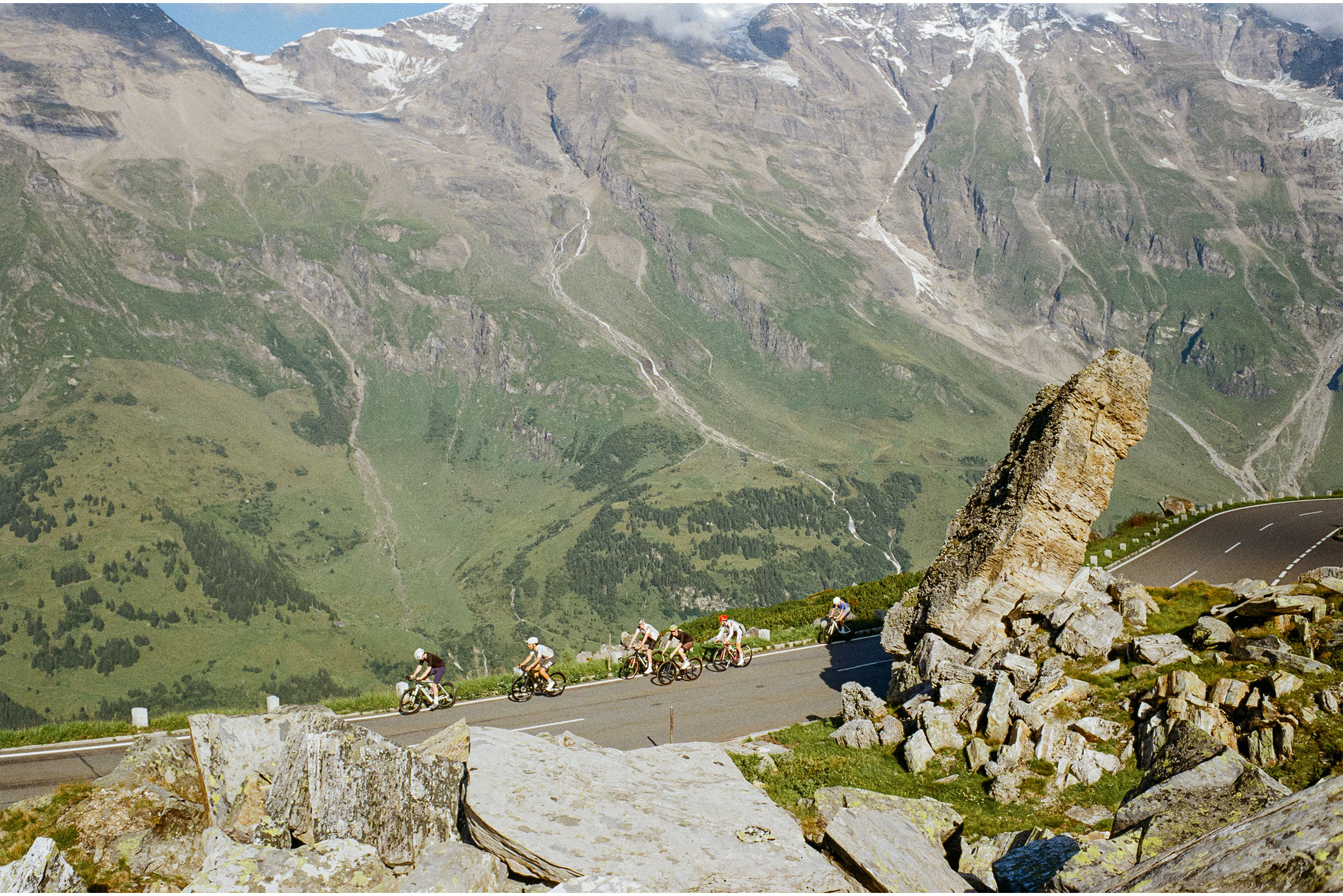
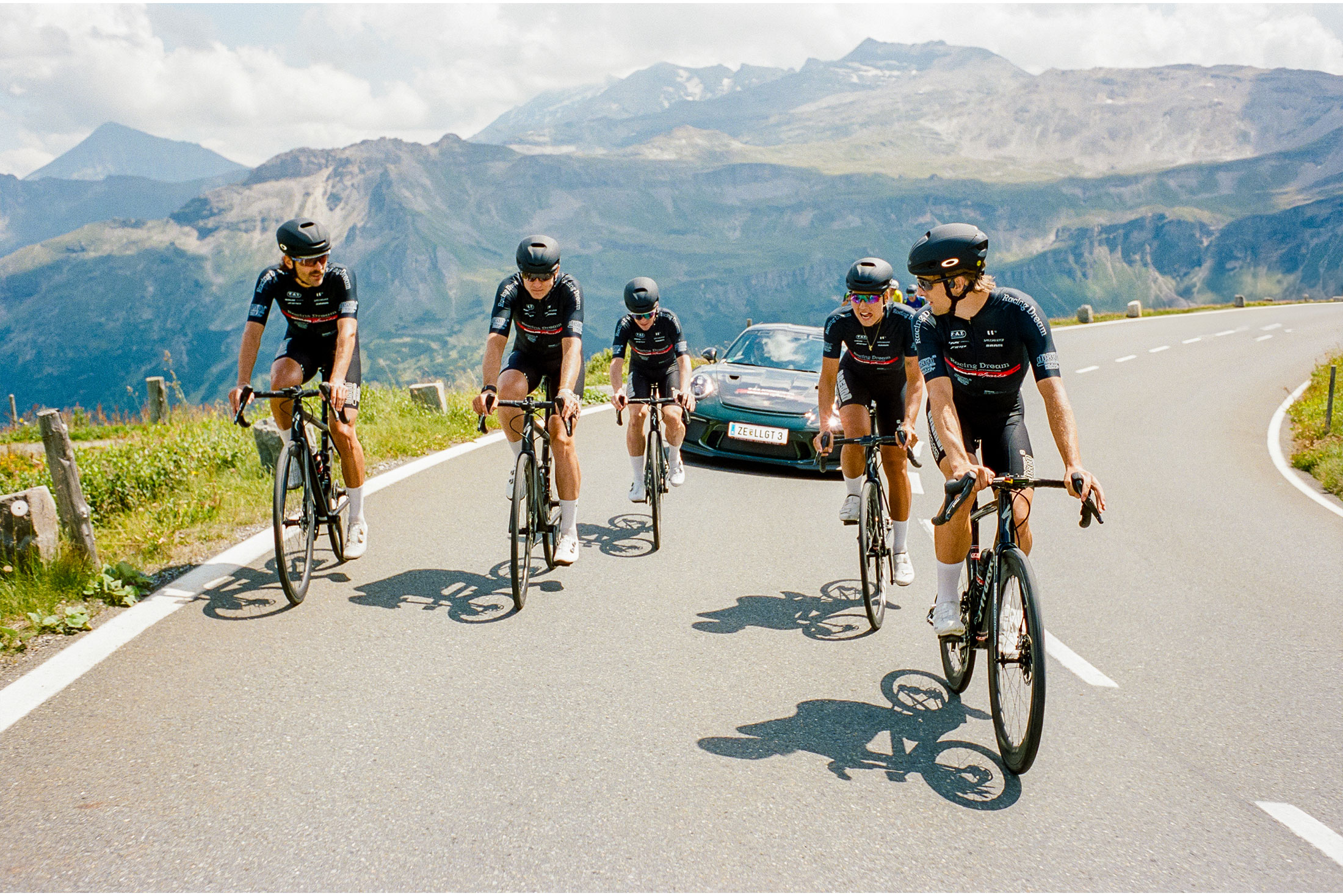
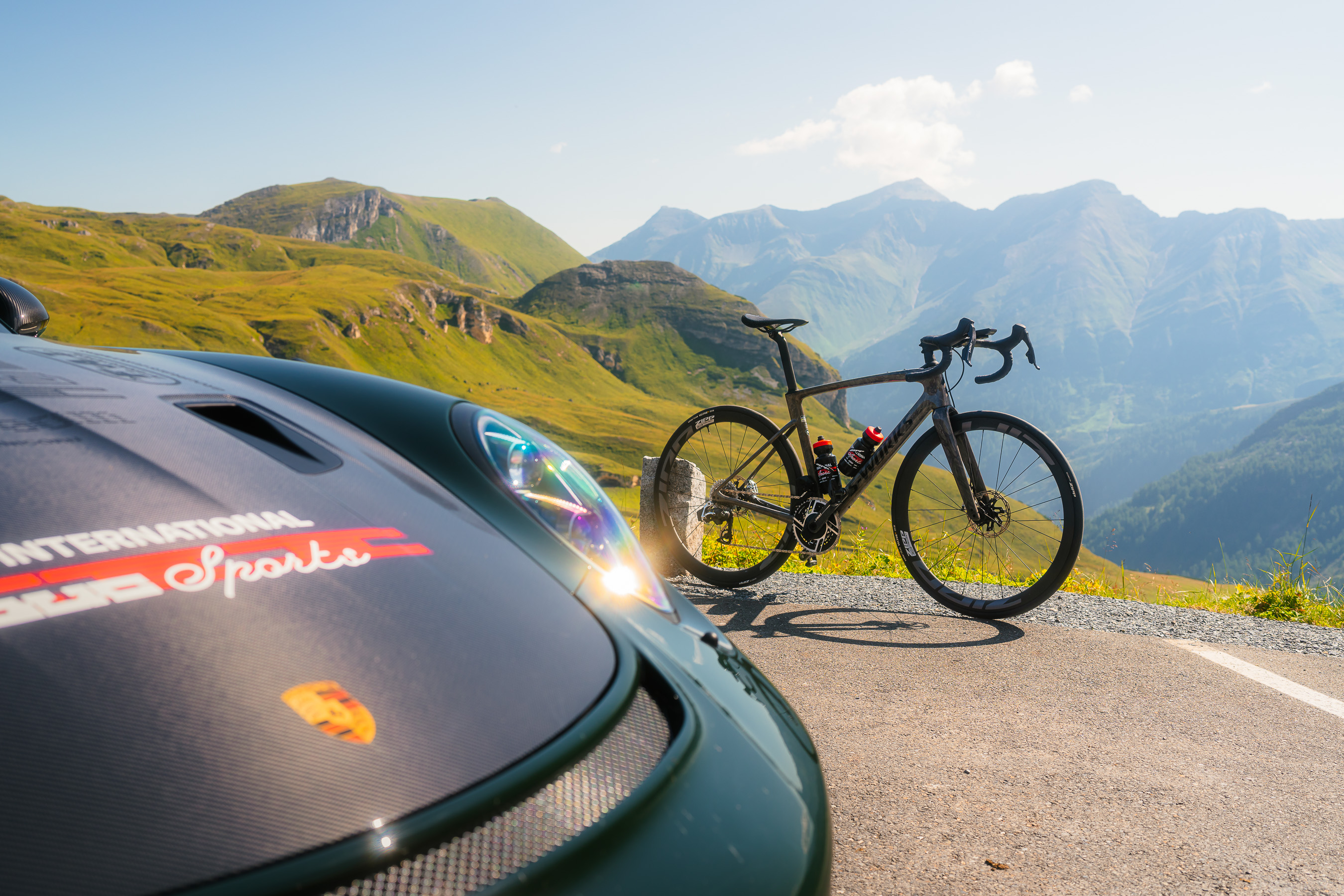
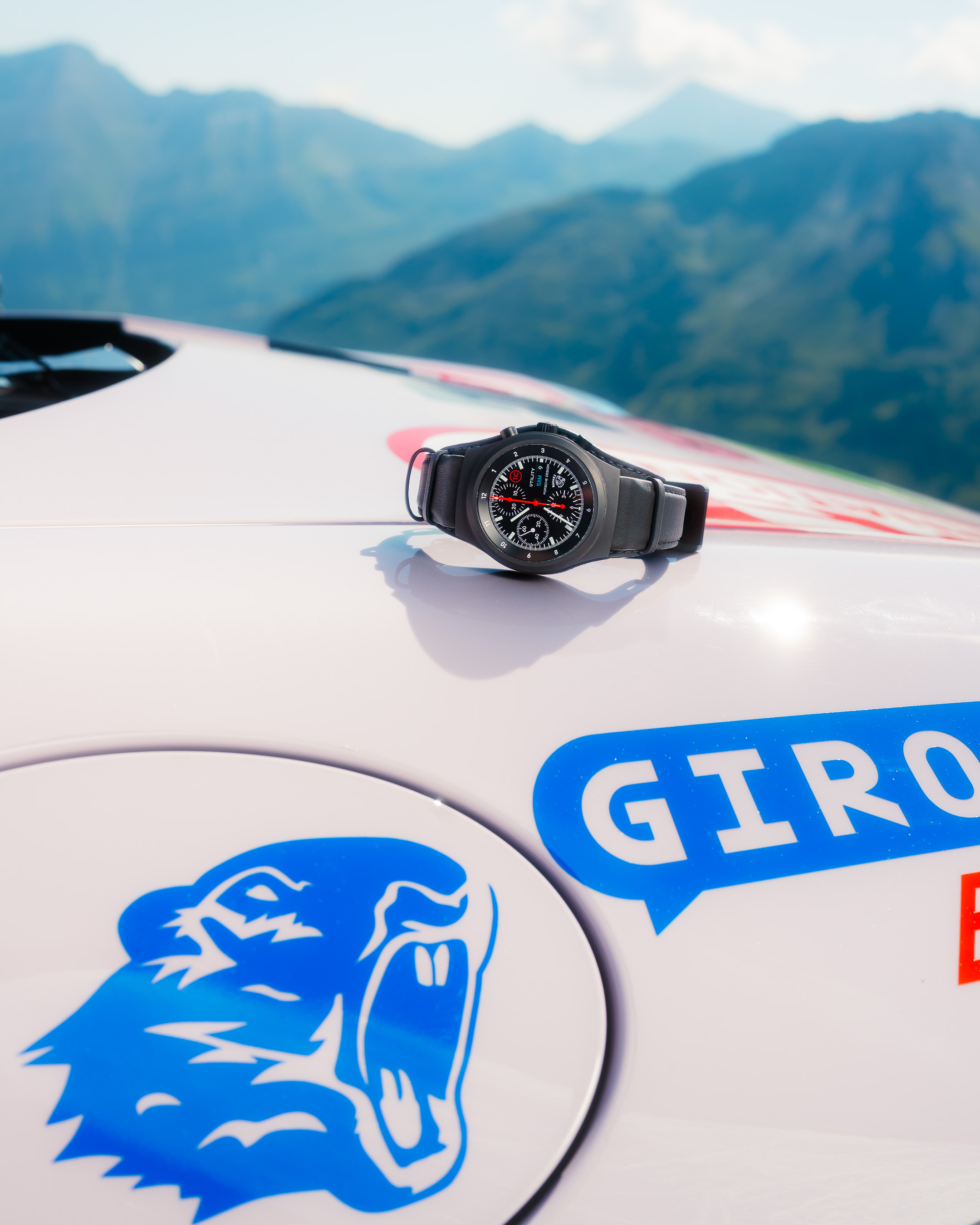
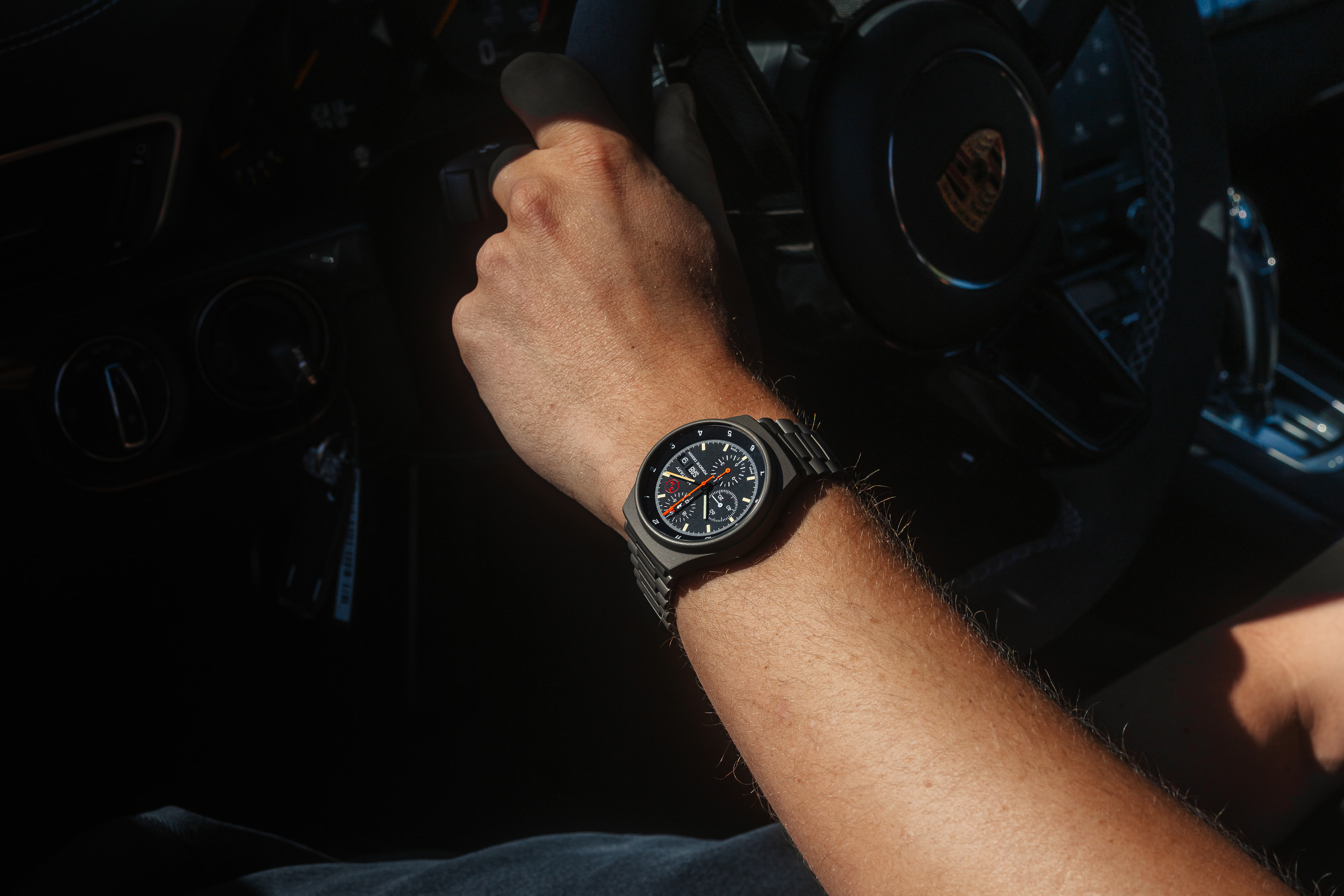
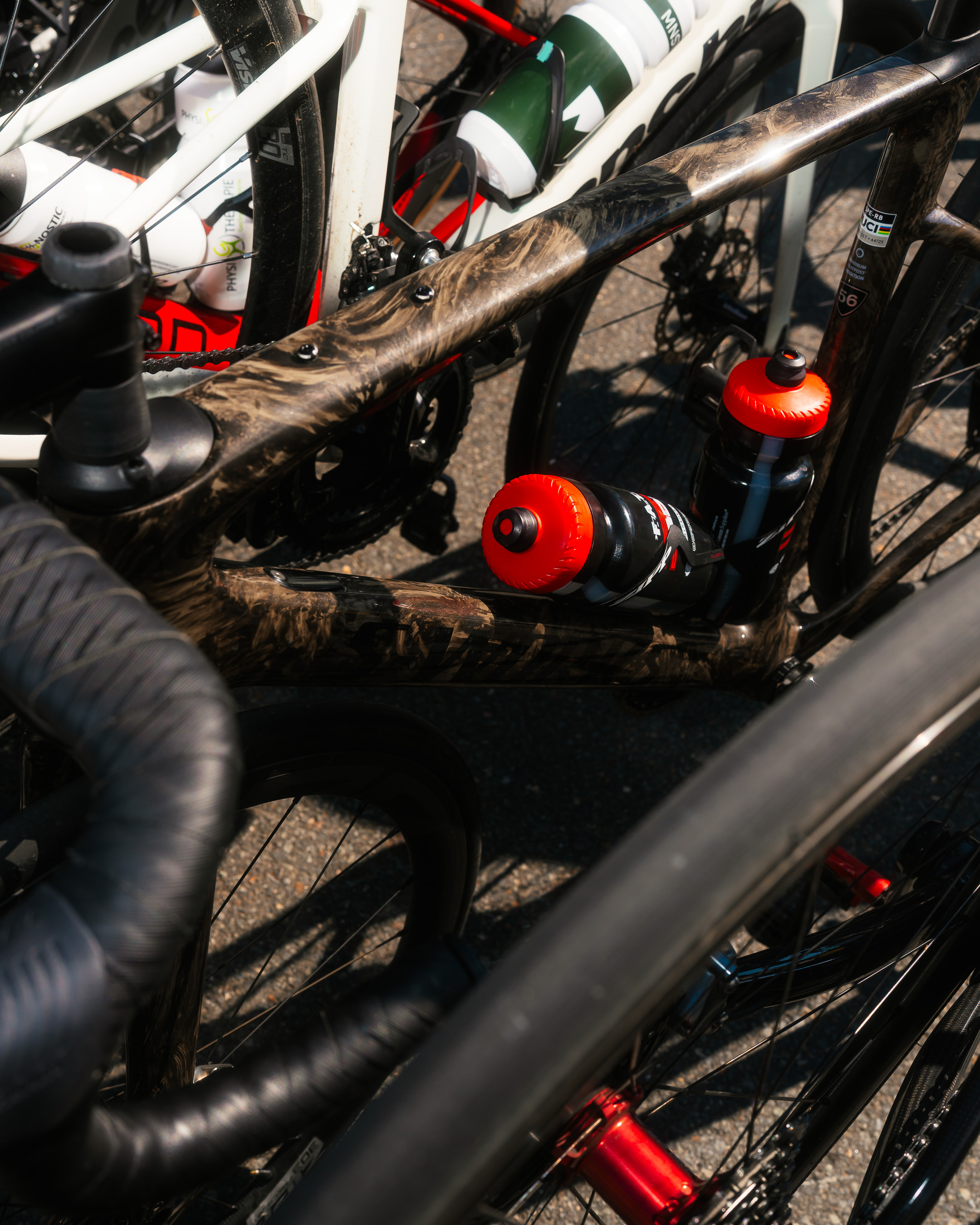
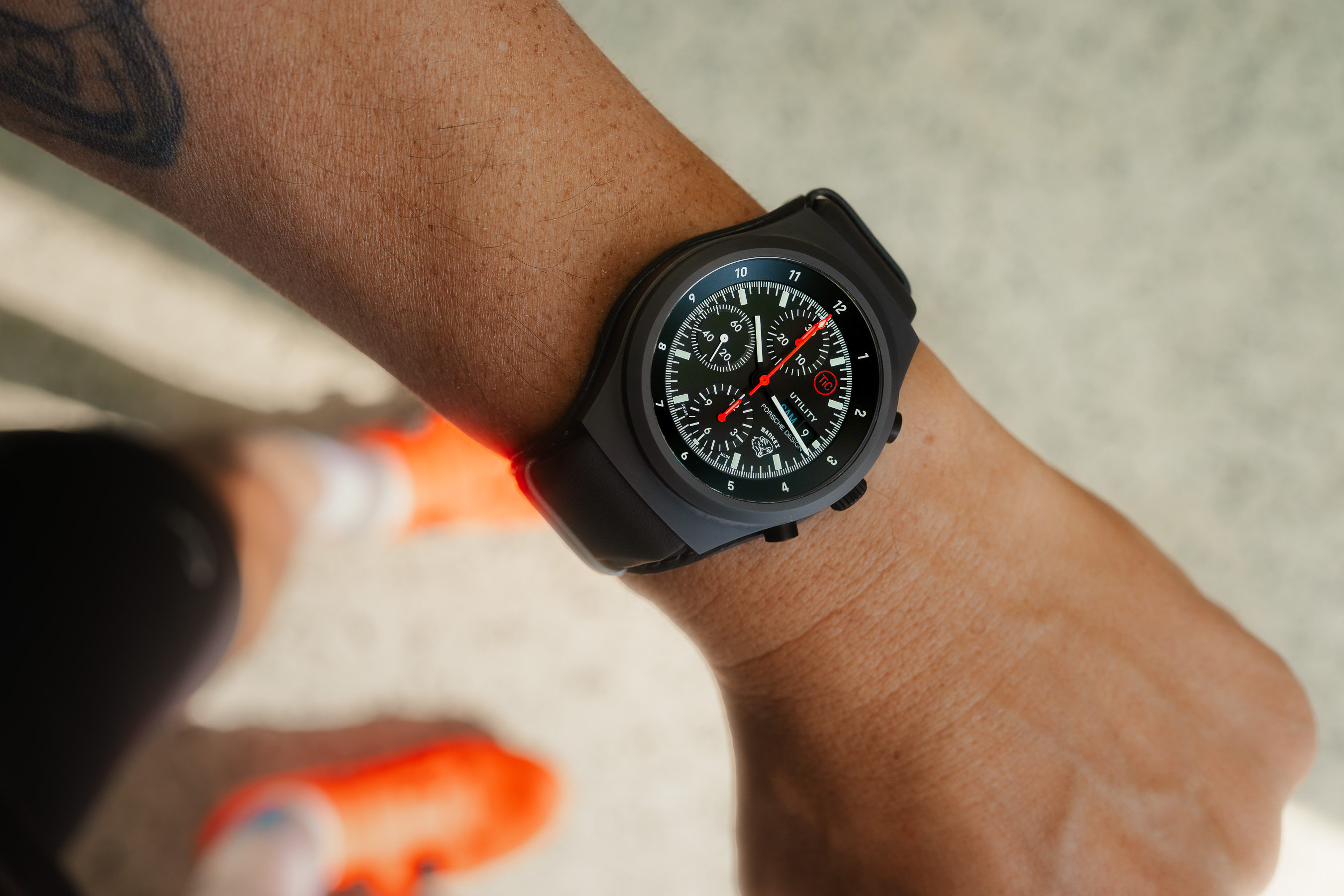
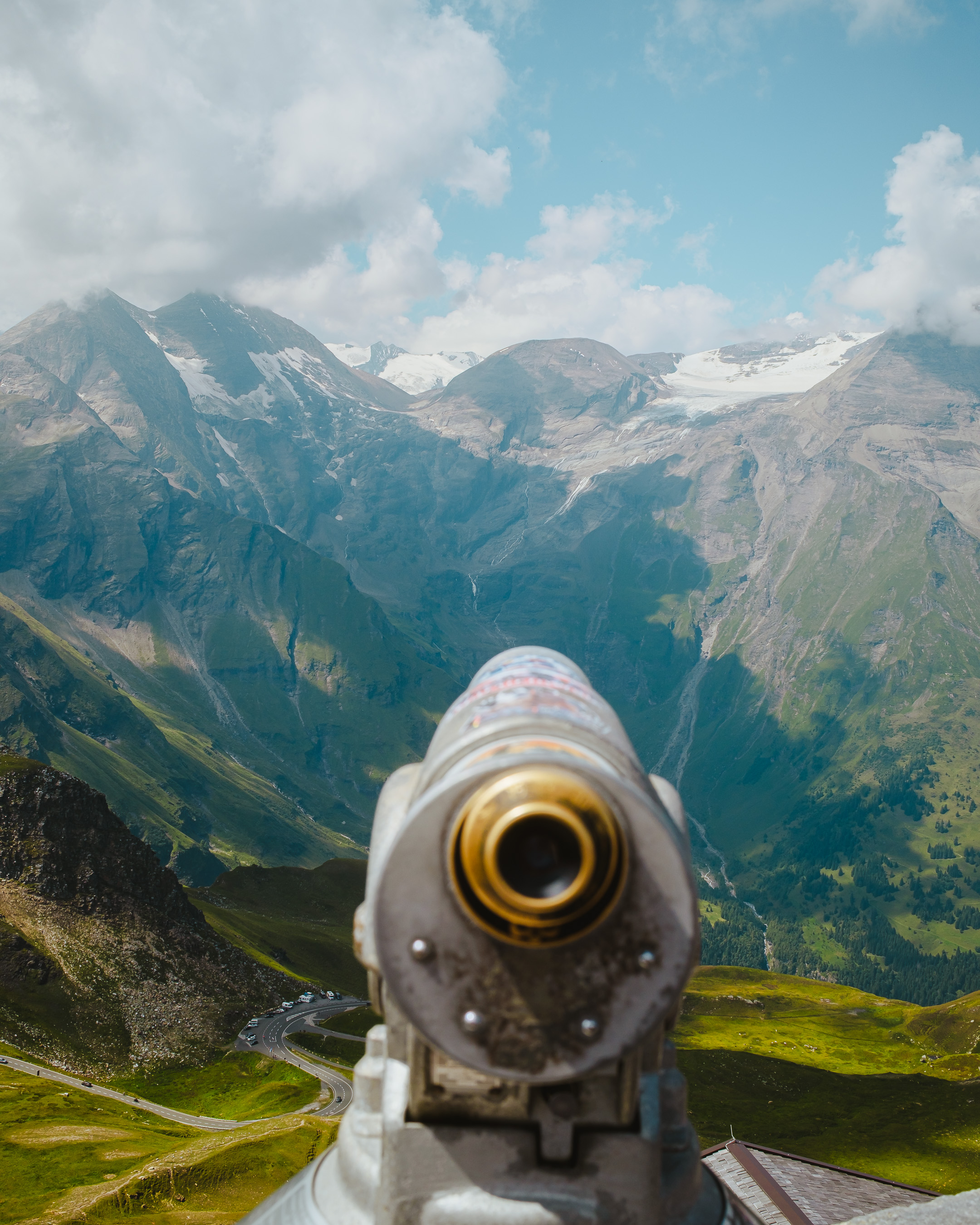
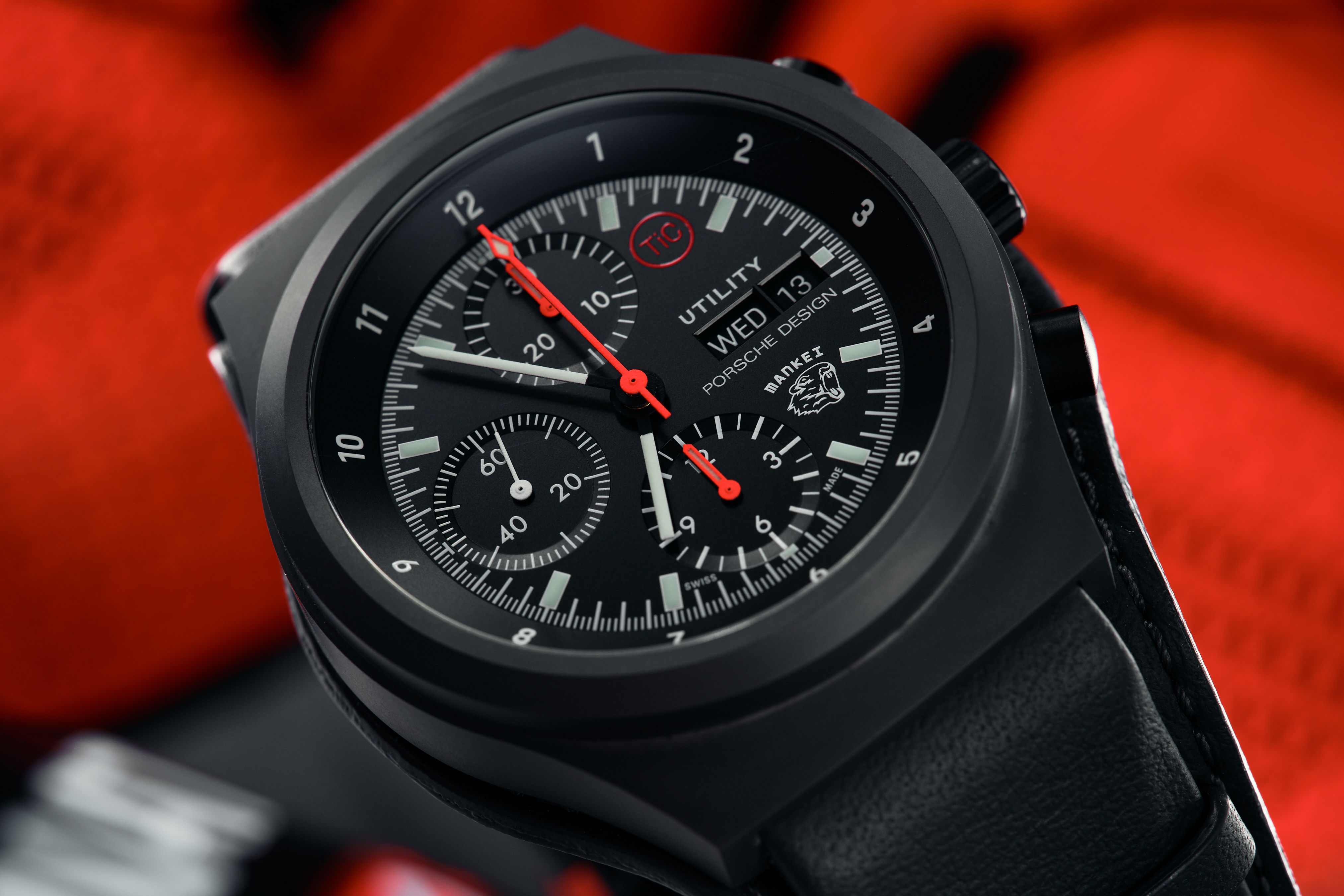
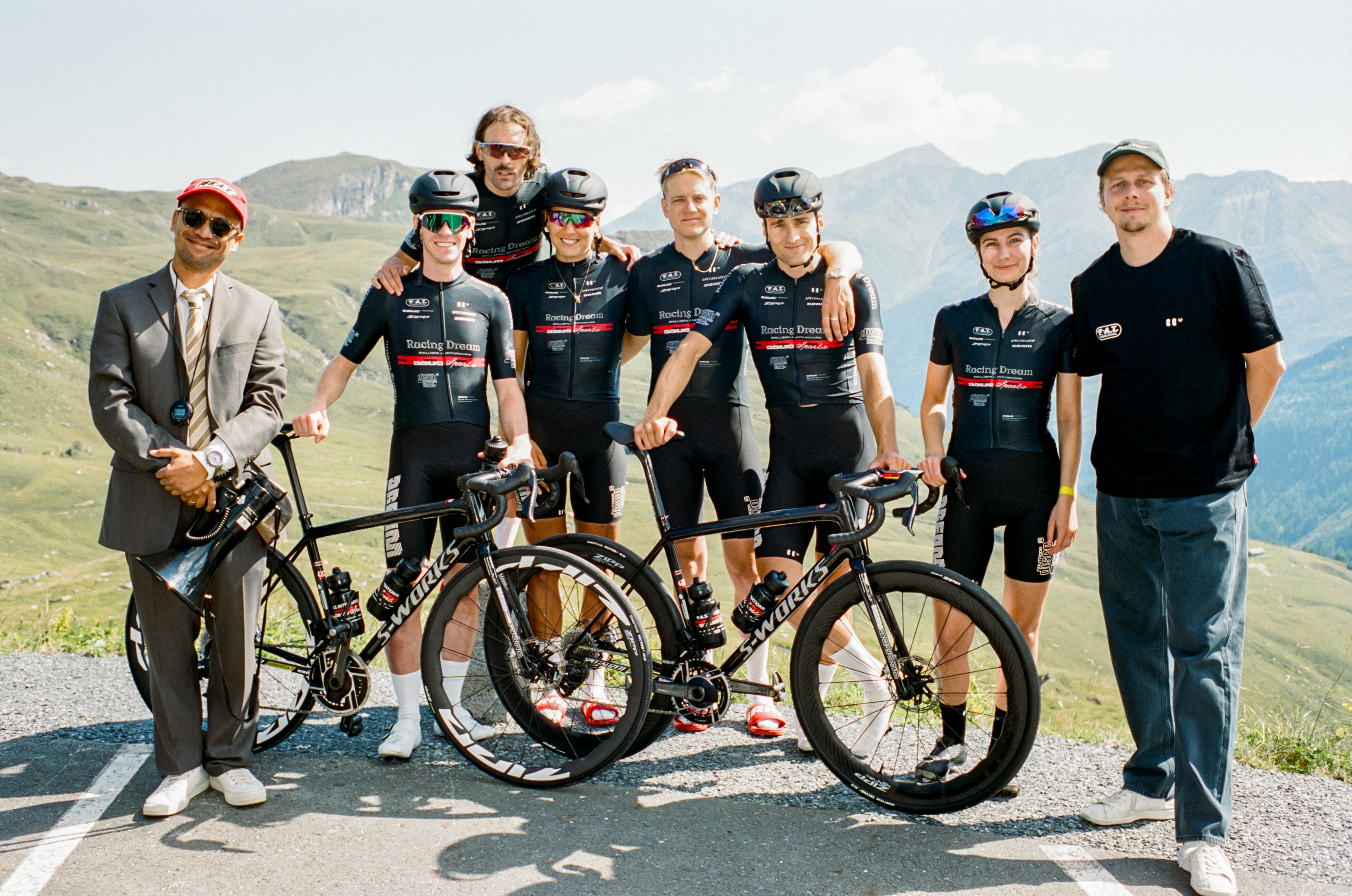
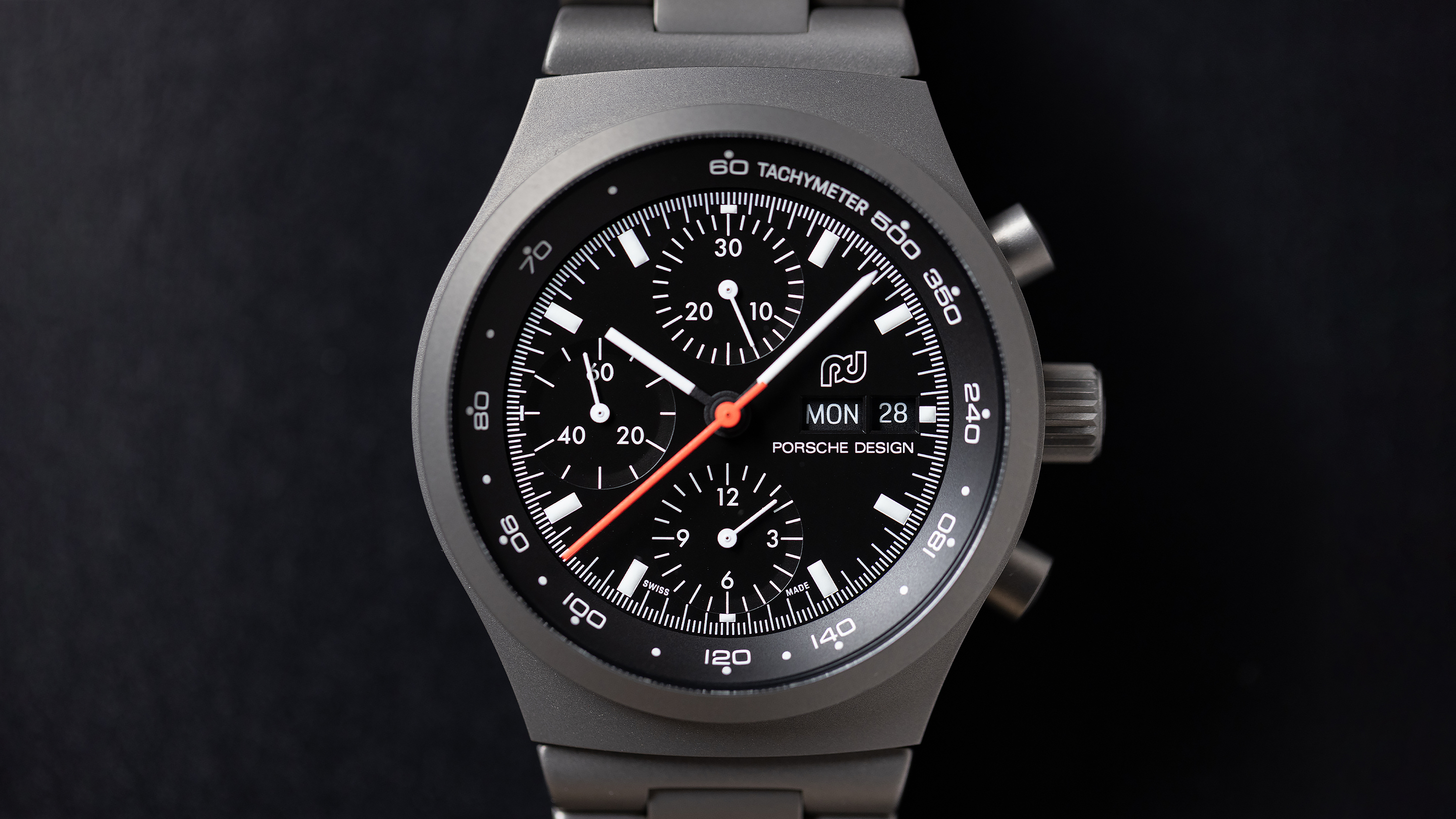


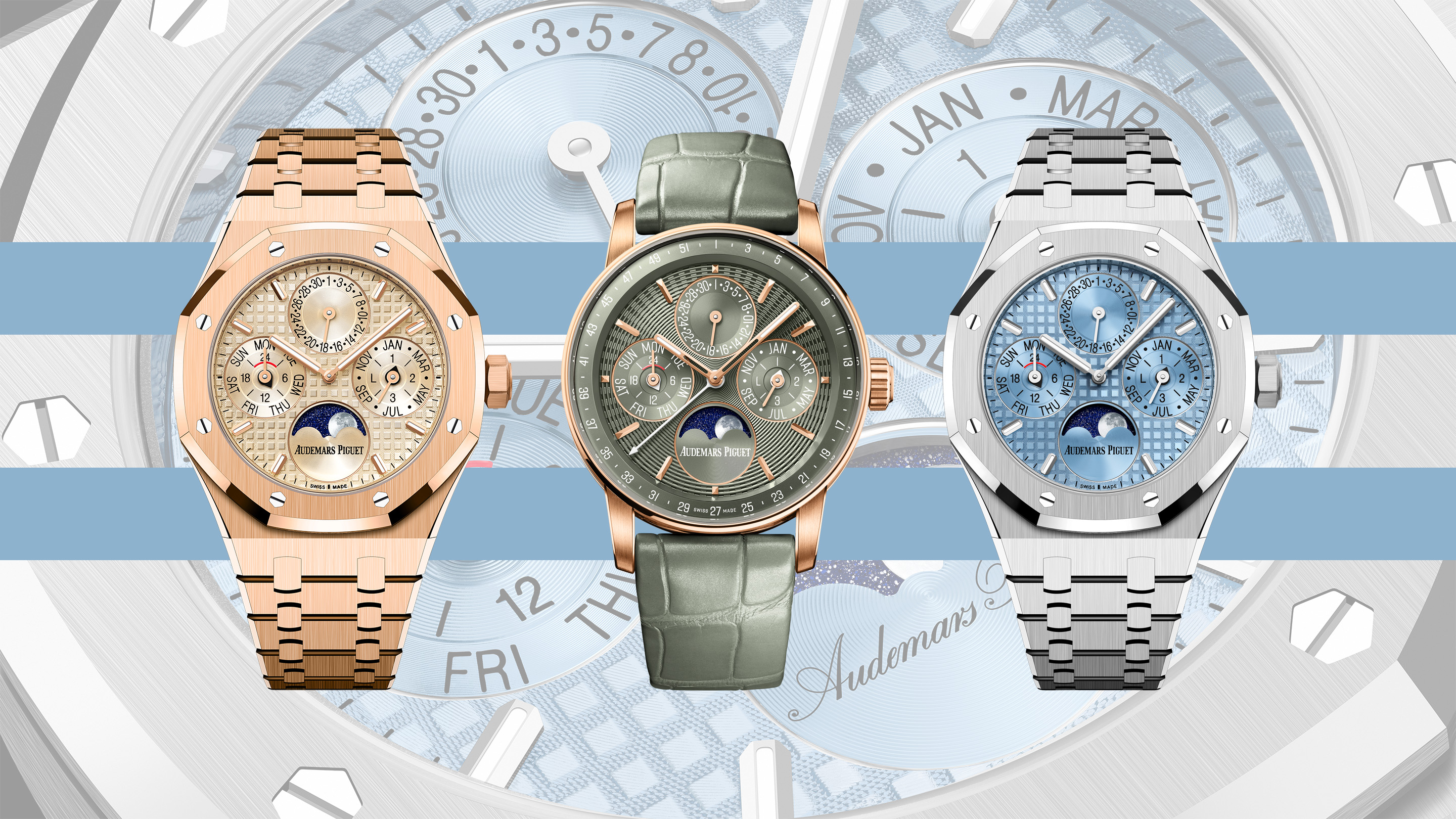
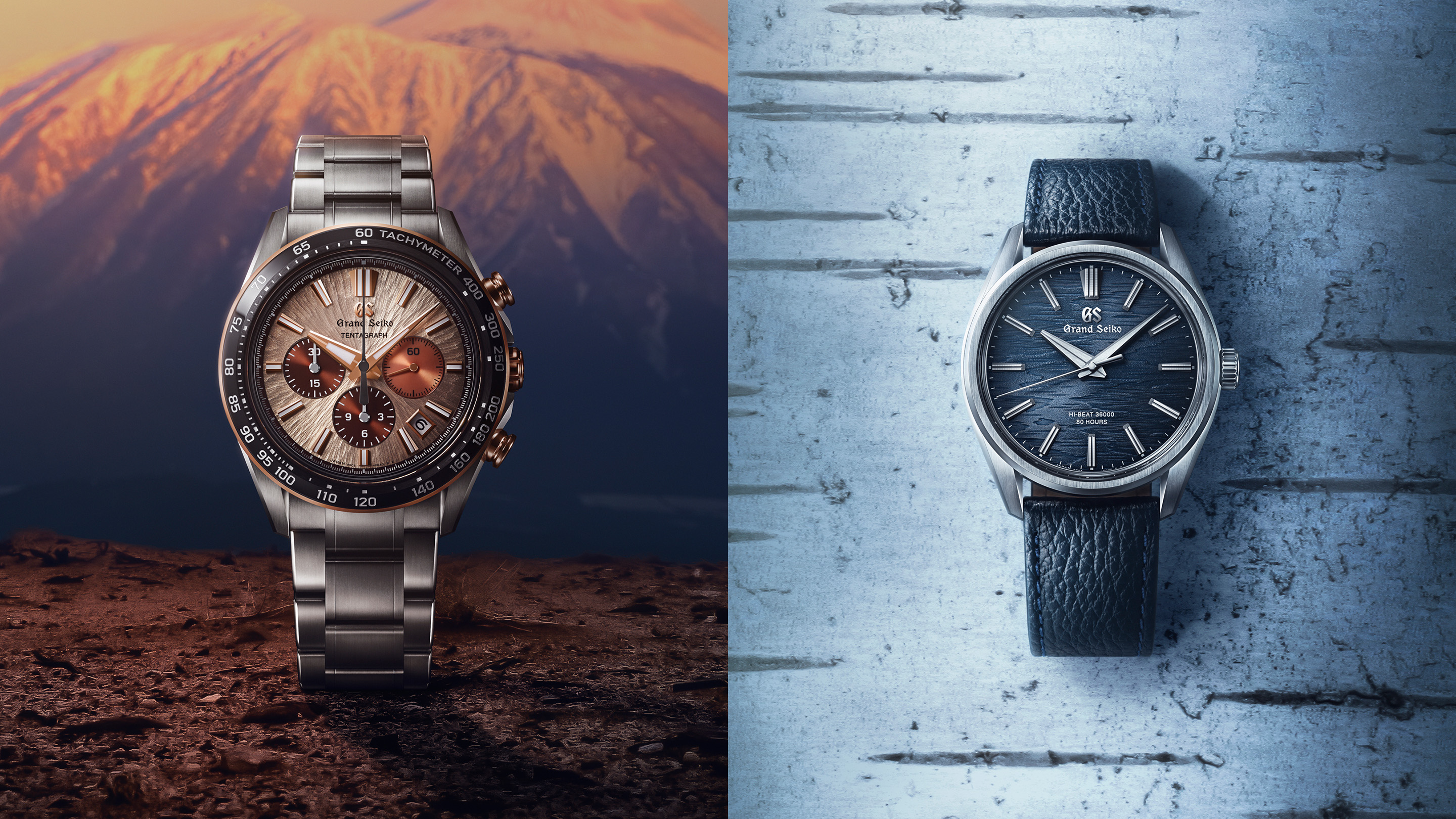
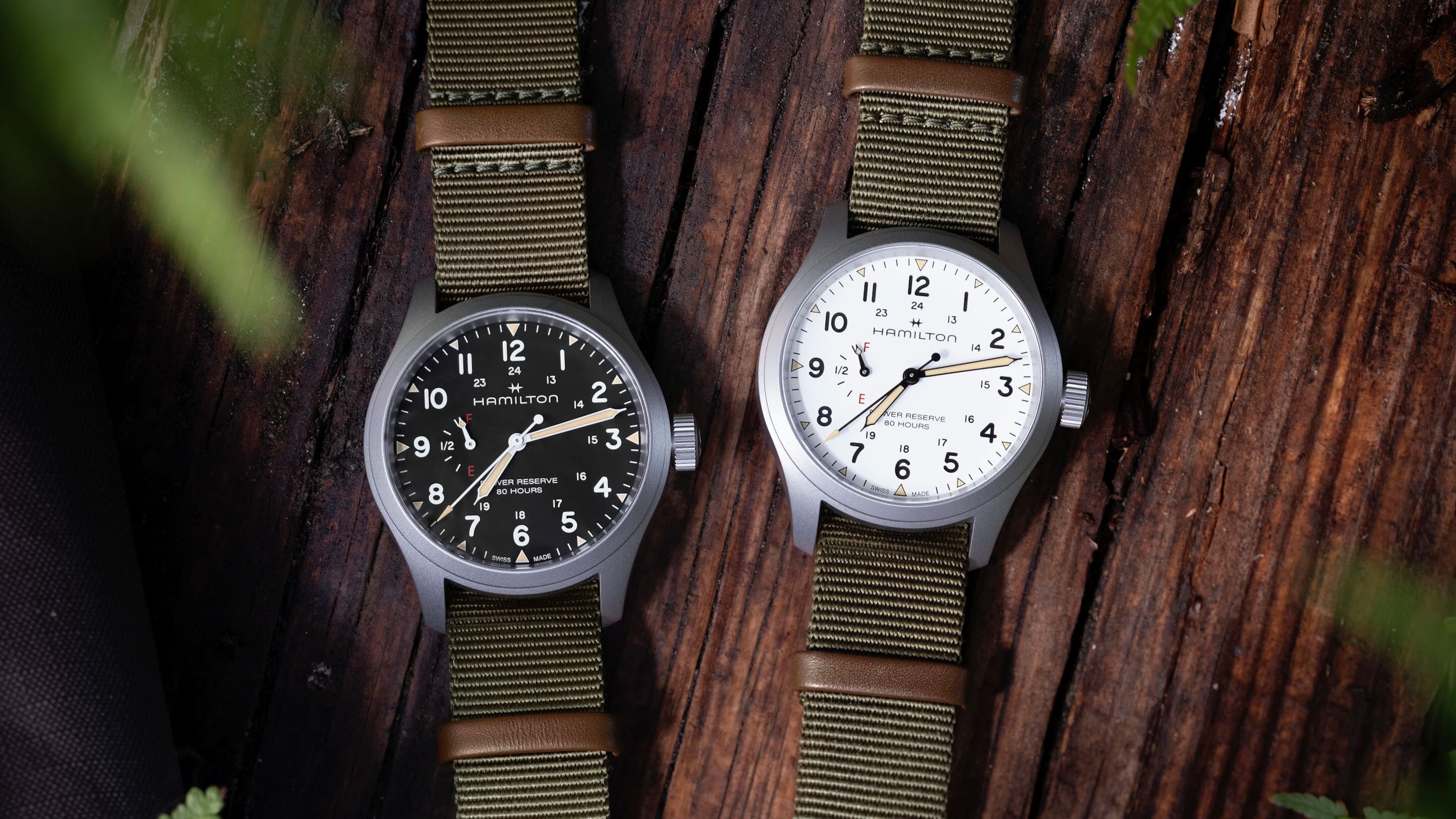
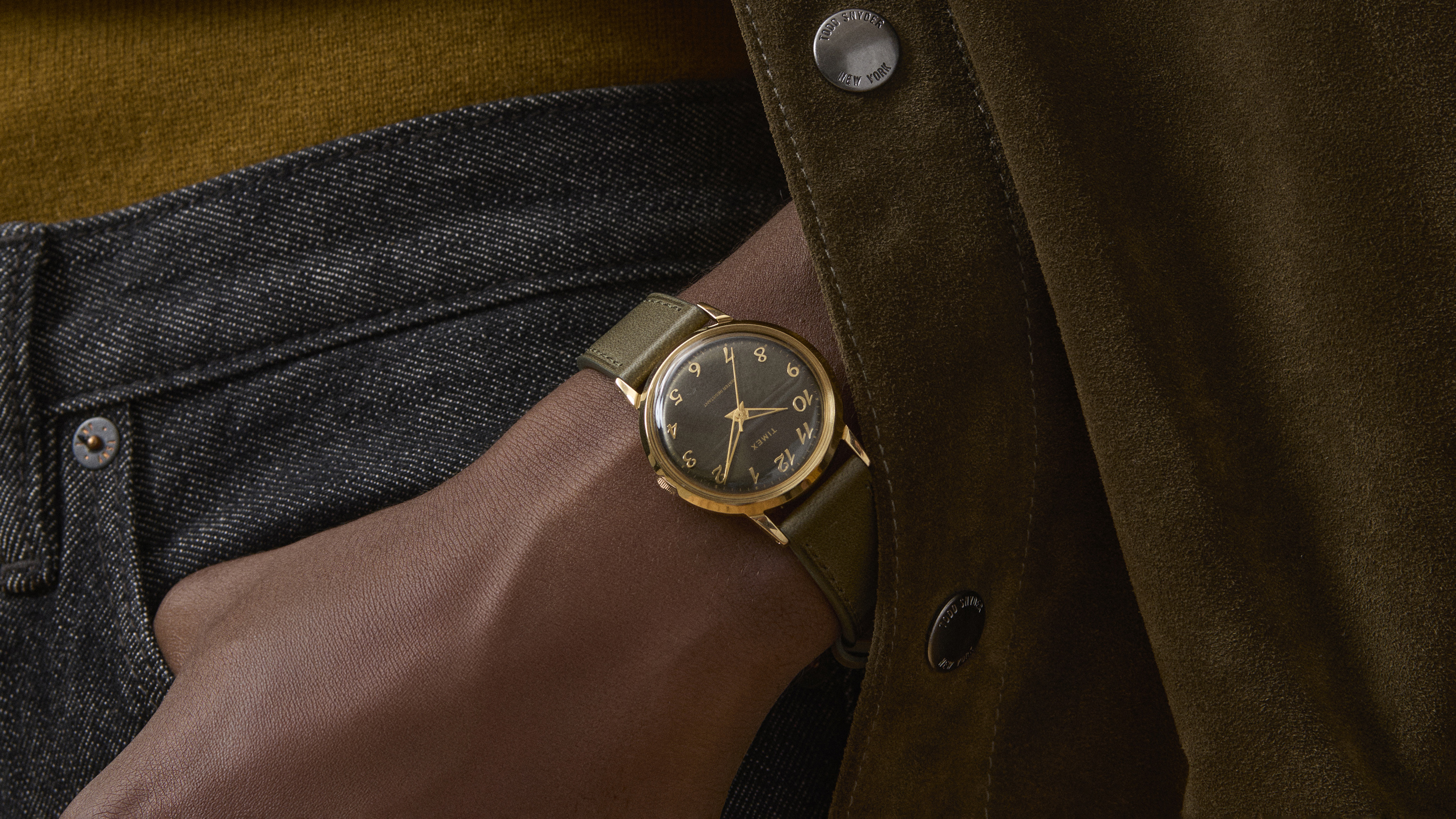
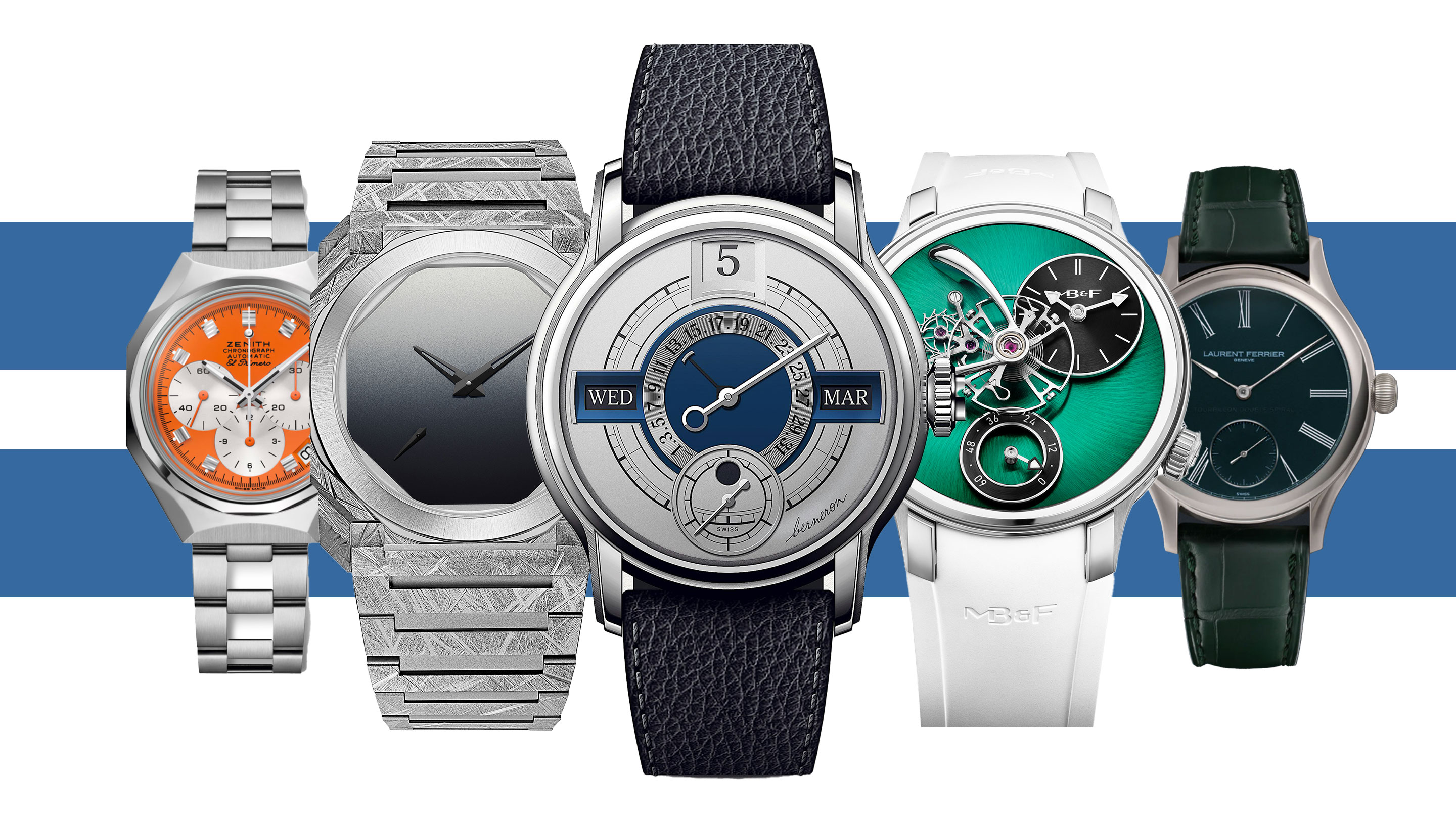
Top Discussions
IntroducingDoxa Sub 300 Carbon Seafoam Limited Edition
IntroducingBaltic's Dive Watch Gets A Facelift With The Aquascaphe MK2
Photo ReportGoodwood Revival 2025